



www.myiem.org.my www.myiem.org.my






www.myiem.org.my www.myiem.org.my


Circulation & Readership Profile
3,200/page
3,200/page
The publisher reserves the right to edit, revise or reject any advertisement deemed unsuitable or inappropriate. •
This one-time-only special rate o er is for new advertisers.
Space availability is subject to booking on a first-come-first-served basis.
Clients will provide ready-to-print artwork in PDF format with 300dpi.
Full page: 210mm x 297mm, 3mm extra bleed sizes for 4-sided.
Advertising space must be utilised before 30 June 2025.
*Please note that the above rate will be subjected to 8% SST. For overseas advertisers, an additional 25% will be charged.
Rate shown above excludes 15% advertising agency commission.
Payment term: Full advance payment.
Artwork submission deadline is on (or before) the 1st week of the prior month of publication.
After the material deadline, no cancellation or alteration to the advertisement will be entertained.
Any cancellation after signing the advertising order will result in a 50% penalty charge.
JURUTERA has an estimated readership of 200,000 professionals. Our esteemed readership consists of certified engineers, decision making corporate leaders, CEOs, government officials, project directors, entrepreneurs, project consultants, engineering consulting firms and companies involved with engineering products and services.
Publica�on month/s:
Company’s Stamp & Authorised Signature
Date


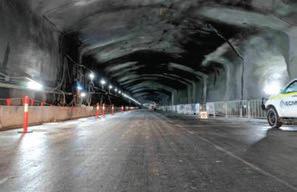
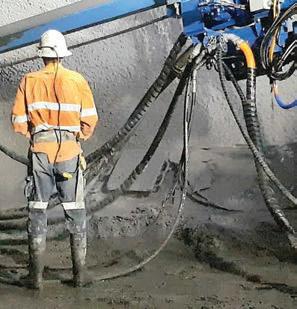
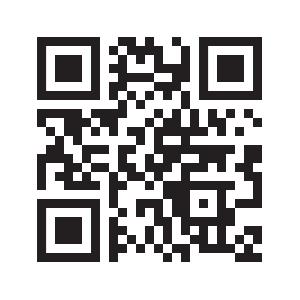










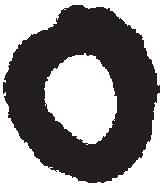
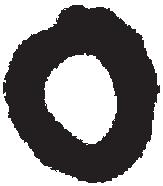







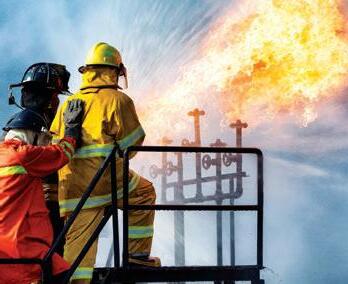
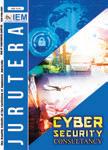

IEM Registered on 1 May 1959
President: Ir. Prof. Dr Jeffrey Chiang Choong Luin
Deputy President: Ir. Yau Chau Fong
Vice Presidents:
Ir. Dr Siti Hawa binti Hamzah, Ir. Fam Yew Hin, Ir. Chen Harn Shean, Ir. Ts. Prof. Dr David Chuah Joon Huang, Y.Bhg. Dato’ Ir. Wan Nazari bin Wan Jusoh, Ir. Dr Bernard Lim Kee Weng, YBhg. Dato’ Ir. Nor Hisham bin Mohd Ghazalli
Honorary Secretary: Ir. Ts. Prof. Dr Tan Chee Fai
Honorary Treasurer: Ir. Dr Siow Chun Lim
Immediate Past President: Y.Bhg. Dato’ Ir. Prof. Dr. Norlida binti Buniyamin
Past Presidents:
Y.Bhg. Academician Tan Sri Dato’ Seri Ir. Prof. Emeritus Dr Chuah Hean Teik, Y.Bhg. Dato’ Paduka Ir. (Dr) Hj. Keizrul bin Abdullah, Y.Bhg. Dato’ Ir. Dr. Lim Chow Hock, Ir. Dr Tan Yean Chin, Ir. Ong Ching Loon
Civil Representative: Ir. Tu Yong Eng
Mechanical Representative: Ir. Ng Yong Kong
Electrical Representative: Ir. Mohd. Aman bin Hj. Idris
Structural Representative: Ir. Dr Tan Kuang Leong
Chemical Representative: Ir. Kim Kek Seong
Representative to Other Disciplines: Ir. Assoc. Prof. Dr Wong Yew Hoong
ICT and Multimedia Representative: Ir. Assoc. Prof. Dr Lai Khin Wee
Women Engineers Representative: Ir. Ts. Assoc. Prof. Dr Syuhaida binti Ismail
Young Engineers Section Representatives:
Mr. Muhammad Ashiq Marecan bin Hamid Marecan, Grad. IEM, Mr. Lim Yiren, Grad. IEM, Mr. Darshan a/l Balasubramaniam, Grad. IEM, Mr. Chuah Pei Lim, Grad. IEM, Ms. Ong Ye Shian, Grad. IEM
Council Members:
Ir. Rusnida binti Talib, Ir. Prof. Dr Lau Hieng Ho, Ir. Muhammad Azmi bin Ayub, Ir. Arul Hisham bin Abdul Rahim, Ir. Razmahwata bin Mohd Razalli, Ir. Simon Yeong Chin Chow, Ir. Dr Chan Seong Phun, Ir. Yam Teong Sian, Ir. Kwok Yew Hoe, Ir. Dr Lee Choo Yong, Ir. Sharifah Azlina binti Raja Kamal Pasmah, Ir. Ts. Dr Wan Syakirah binti Wan Abdullah, Ir. Dr Mui Kai Yin, Ir. Shamil bin Abu Hassan, Ir. Ts. Wan Rizaluddin Abdullah bin Wan Ali, Ir. Dr Lam Wei Haur, Ir. Dr Angelia Liew San Chuin, Ir. Prof. Dr Zuhaina binti Zakaria, Ir. Begum Irdawati binti Dowlad Rahuman, Ir. Chong Chee Yen, Ir. Dr Khoo Chee Min, Ir. Abdul Razak bin Yakob, Ir. Dr Chan Swee Huat, Ir. Alex Looi Tink Huey, Ir. Sukhairul Nizam bin Abdul Razak, Y.Bhg. Dato’ Ir. Ting Chek Choon (casual vacancy for YBhg. Dato’ Ir. Nor Hisham bin Mohd Ghazalli)
Council Members by Invitation:
Y.Bhg. Dato’ Ir. Ts. Abdul Razib bin Dawood, Ir. Gopal Narian Kutty, Ir. Oon Chee Kheng
Branch Chairman
1. Pulau Pinang : Ir. Dr Lee Choo Yong
2. Selatan : Ir. David Puen Ming Shen
3. Perak : Ir. Assoc. Prof. Dr Nursyarizal bin Mohd Nor
4. Pahang : Ir. Harzah Masni binti Ramli
5. Kedah-Perlis : Ir. Roshasmawi bin Abdul Wahab
6. Negeri Sembilan : Ir. Khoo Nee Keong
7. Kelantan : Ir. Abrizan bin Abdul Kadir
8. Terengganu : Ir. Mazlan bin Che Ku Ahmad
9. Melaka : Ir. Lim Su Hian
10. Sarawak : Ir. Dr Angelia Liew San Chuin
11. Sabah : Ir. Mohd Yaakob bin Jaafar
12. Miri : Ir. Meheron Selowara Joo
Chairman: Ir. Fam Yew Hin
Vice Chairman: Ir. Alex Looi Tink Huey
Secretary: Ir. Ts. Assoc. Prof. Dr Hum Yan Chai
Chief Editor: Ir. Fam Yew Hin
Principal Bulletin Editor: Ir. Alex Looi Tink Huey
Principal Journal Editor: Ir. Ts. Prof. Dr Teo Fang Yenn
Chairman Webportal: Ir. Assoc. Prof. Dr Hasril bin Hasini
Resource Centre Chairman: Ir. Razmahwata bin Mohd Razalli
Committee Members:
Ir. Ong Guan Hock, Ir. Lee Chang Quan, Ir. Lau Tai Onn, Ir. Yee Thien Seng, Ir. Dr Lee Choo Yong, Ir. Ts. Dr Tan Kim Seah, Ir. Assoc. Prof. Dr Lee Tin Sin, Ir. Dr Bhuvendhraa Rudrusamy, Ir. Rusnida binti Talib, Ir. Dr Nor Ilia Anisa binti Aris, Ir. Ts. Wong Chee Fui, Ir. Dr Moey Lip Kean, Ir. Abdul Azim bin Abdul Rahman, Ir. Dr Aidil bin Chee Tahir, Ir. Kwok Yew Hoe, Ir. Begum Irdawati binti Dowlad Rahuman, Ir. Dr Sara Lee Kit Yee, Dr Sudharshan N. Raman, Grad. IEM, Ms. Michelle Lau Chui Chui, Grad. IEM, Mr. Chuah Pei Lim, Grad. IEM, Ms. Loo Suk Sin, Mr. Ng Han Wei
EDITORIAL
Chief Editor: Ir. Fam Yew Hin
Principal Bulletin Editor: Ir. Alex Looi Tink Huey
Committee Members: Ir. Lau Tai Onn, Ir. Ong Guan Hock, Ir. Yee Thien Seng, Ir. Ts. Prof. Dr Teo Fang Yenn, Ir. Razmahwata bin Mohd Razalli, Dr Sudharshan N. Raman, Ir. Lee Chang Quan, Ir. Dr Lee Choo Yong, Ir. Begum Irdawati binti Dowlad Rahuman, Ir. Ts. Dr Tan Kim Seah, Ms. Michelle Lau Chui Chui,Grad. IEM, Ir. Ahmad Rafidi bin Mohayiddin
THE INSTITUTION OF ENGINEERS, MALAYSIA
Bangunan Ingenieur, Lots 60 & 62, Jalan 52/4, P.O. Box 223, (Jalan Sultan), 46720 Petaling Jaya, Selangor Darul Ehsan. Tel: 603-7890 0130 Fax: 603-7957 7678
E-mail: sec@iem.org.my Homepage: http://www.myiem.org.my
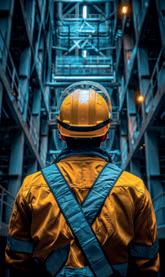













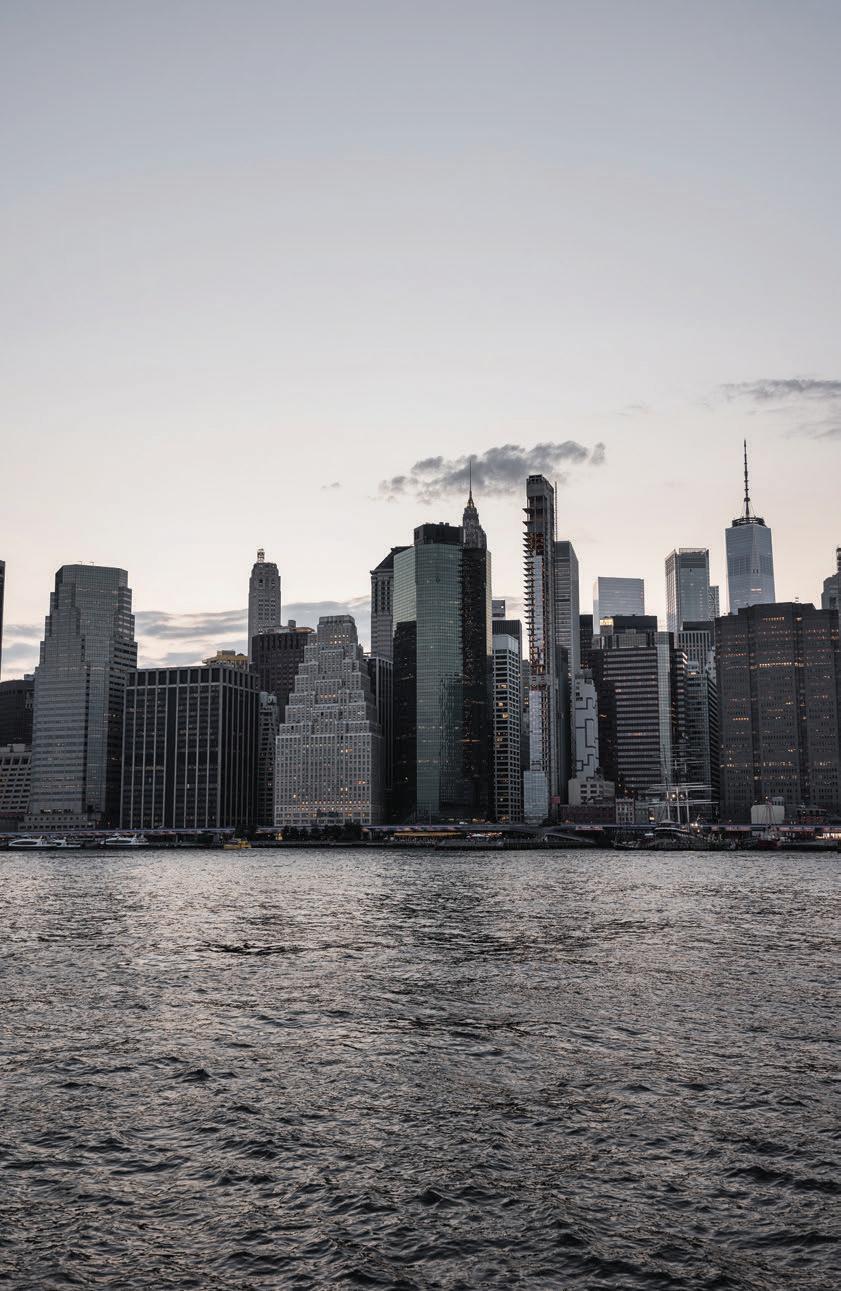


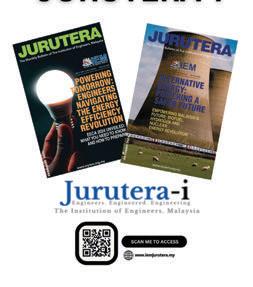
DIMENSION PUBLISHING SDN. BHD. [ 199701034233 (449732-T) ]
Level 18-01, PJX-HM Shah Tower, No. 16A, Persiaran Barat, 46050 Petaling Jaya, Selangor Darul Ehsan, Malaysia. Tel: +(603) 7493 1049 Fax: +(603) 7493 1047
E-mail: info@dimensionpublishing.com Website: www.dimensionpublishing.com
Chairman Robert Mebruer
CEO/Publisher Shirley Tham shirley@dimensionpublishing.com
Head of Marketing & Business Development
Joseph How joseph@dimensionpublishing.com
Production Editor Tan Bee Hong bee@dimensionpublishing.com
Contributing Writers
Putri Zanina putri@dimensionpublishing.com
Hanna Sheikh Mokhtar hanna@dimensionpublishing.com
Senior Graphic Designer
Sofia Hanis Mohd Uzir sofia@dimensionpublishing.com
Graphic Designer
Nicole Theng nicole@dimensionpublishing.com
Advertising Consultants
Tham Choon Kit ckit@dimensionpublishing.com
Accounts Cum Admin Executive Yong Yen Yin yenyin@dimensionpublishing.com
For advertisement placements and subscriptions, please contact:
DIMENSION PUBLISHING SDN. BHD. [ 199701034233 (449732-T) ]
Tel: +(603) 7493 1049 Fax: +(603) 7493 1047
E-mail: info@dimensionpublishing.com Website: www.dimensionpublishing.com
Subscription Department
E-mail: info@dimensionpublishing.com
JURUTERA MONTHLY CIRCULATION: OVER 50,000 MEMBERS
Submission or placement of articles in JURUTERA could be made to the:
Chief Editor THE INSTITUTION OF ENGINEERS, MALAYSIA (IEM) Bangunan Ingenieur, Lots 60 & 62, Jalan 52/4, P.O. Box 223 (Jalan Sultan), 46720 Petaling Jaya, Selangor. Tel: +(603) 7890 0130 Fax: +(603) 7957 7678
E-mail: pub@iem.org.my Website: http://www.myiem.org.my
JURUTERA is published and printed monthly by Dimension Publishing Sdn. Bhd.
PUBLICATION DISCLAIMER
The publication has been compiled by both IEM and Dimension with great care and they disclaim any duty to investigate any products, process, services, designs and the like which may be described in this publication. The appearance of any information in this publication does not necessarily constitute endorsement by IEM and Dimension. There is no guarantee that the information in this publication is free from errors. IEM and Dimension do not necessarily agree with the statement or the opinion expresssed in this publication.
COPYRIGHT
JURUTERA Bulletin of IEM is the official magazine of The Institution of Engineers, Malaysia (IEM) and is published by Dimension Publishing Sdn. Bhd. The Institution and the Publisher retain the copyright over all materials published in the magazine. No part of this magazine may be reproduced and transmitted in any form or stored in any retrieval system of any nature without the prior written permission of IEM and the Publisher. © 2025, The Institution of Engineers, Malaysia (IEM) and Dimension Publishing Sdn. Bhd.
by Ir. Tajul Ariffin Mohamed Nori Chair, Safety in Engineering Special Interest Group (SESIG)

Our industry has navigated a dynamic and challenging year, with 2024 marking significant safety and health legislative changes that signal a more stringent approach to safety. In this issue of JURUTERA , our cover story emphasises the paramount importance of safety in engineering education.
It’s our collective responsibility to ensure that safety is not just a chapter in our textbooks but a fundamental aspect of our daily practice and culture. Integrating safety education at every level will foster a culture where innovation and safety go hand in hand. Safety engineering has evolved from mere compliance to a strategic element of design, operation and maintenance, driven by technological advancements, globalisation and lessons from past industrial accidents to preventive measures.
With rapid technological change, complex interconnected systems, cybersecurity threats and balancing sustainability with safety, the future presents unique safety challenges for engineers. However, challenges also offer opportunities. Engineers can lead in developing curricula that incorporate modern safety practices, engage in safety research to innovate technologies, and pursue further education to become leaders in safety. Furthermore, there’s a growing demand for consultancy, safety audits and specialised training, allowing engineers to influence both organisational practices and broader safety standards.
Let us commit to making safety an integral part of our educational and professional ethos, thereby safeguarding our future while advancing our field.
by Ir. Alex Looi Tink Huey Principal Bulletin Editor

In engineering, safety isn’t just a box to tick – it’s the foundation of every structure, circuit, and system that we design. One miscalculation, one overlooked detail, and the consequences can be catastrophic.
This month, JURUTERA spotlights Safety In Engineering, exploring the latest trends shaping Malaysia’s built environment. From AI-powered predictive maintenance to real-time hazard monitoring via IoT, technology is fast transforming the way we prevent accidents before they happen. The push for stricter Building Information Modelling (BIM) standards, the rise of smart PPE with IoT integration, and the enforcement of ISO 45001 in engineering projects reflect a nationwide shift towards a culture of safety-first.
As engineers, our duty extends to beyond blueprints. We must be the guardians of lives, ensuring that every bridge stands firm, that every system runs securely, and that every innovation upholds the highest safety standards because, in engineering, there’s no such thing as too safe.

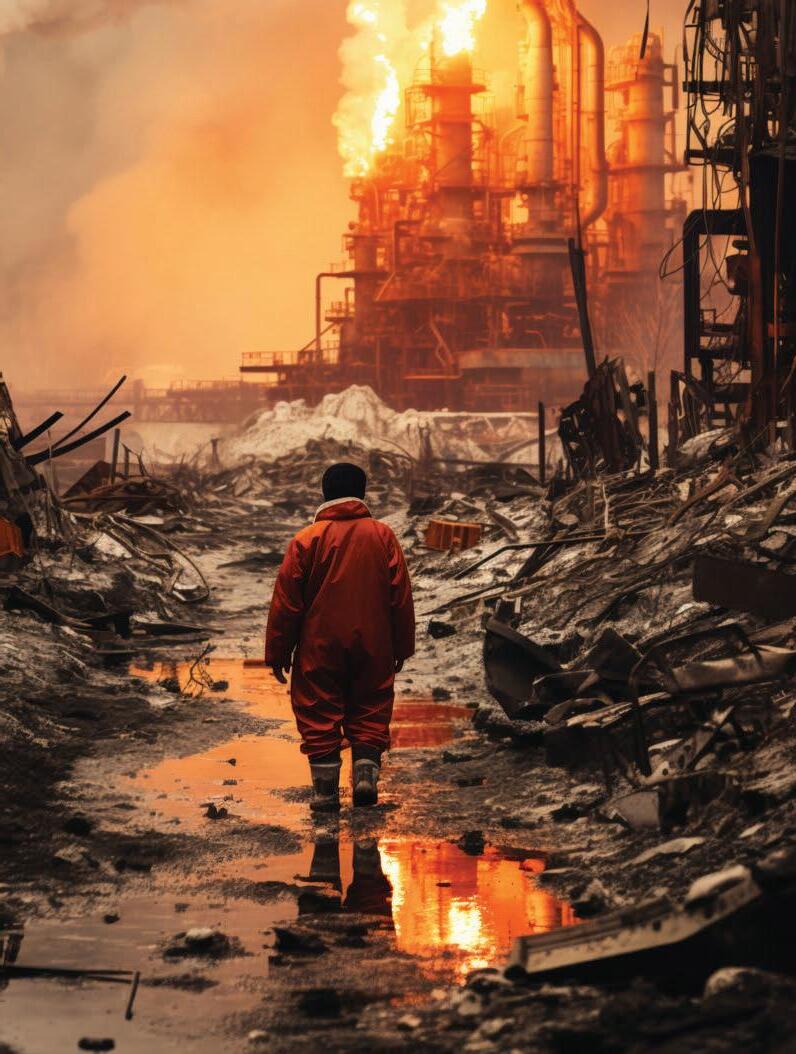
An industrial explosion is a critical challenge to occupational safety and health management and such an event demands urgent and comprehensive attention. The establishment of occupational health and safety legislation in Malaysia has been significantly influenced by major industrial disasters, notably the explosion at the Bright Sparkle firecracker factory in May 1991, often referred to as Sungai Buloh’s Hiroshima. The catastrophic incident was a key catalyst for the introduction of the Occupational Safety & Health Act 1994. Industrial explosions have devastating impacts, highlighting the need to learn and improve safety as well as to prevent future accidents. Under the Safety & Health (Notification of Accident, Dangerous Occurrence, Occupational Poisoning and Occupational Disease) Regulations 2004 or better known as NADOPOD Regulations, it is the duty of the employer to report any dangerous occurrence or accident at the place of work, including an explosion event. This will enable the authority with jurisdiction and the Department of Occupational Safety & Health (DOSH), to stay alert to dangerous occurrences such as explosions, even if these are not reported in the media. DOSH had investigated various incidents and found that these occurred due to numerous factors. The following are some common types of explosions.
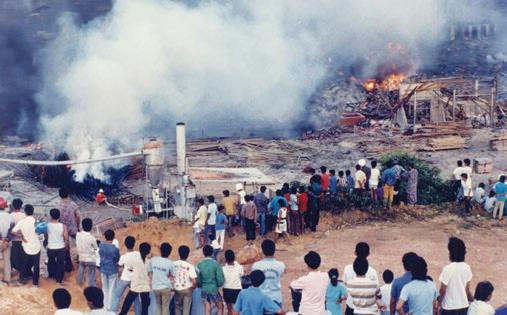
An explosion is a sudden, rapid release of energy that produces damaging pressures. The damage potential from an explosion depends on the pressure created and how quickly that energy is released. There are two terms: Deflagration and Detonation.
A deflagration is an explosion where the flame speed is lower than the speed of sound – approximately 335 m/sec; a detonation happens when the flame speed is greater. Detonations are louder and are often more destructive than deflagrations.
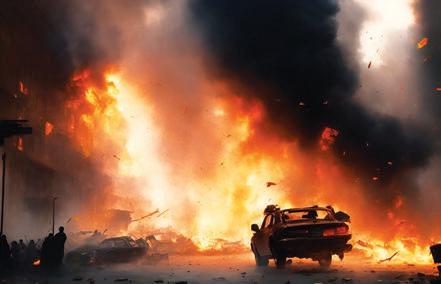
A fire is often depicted by a fire triangle, namely Heat Source, Oxygen and Fuel. When these three elements are present at the right time and place, a fire will occur. Expanding from the fire triangle is the explosion pentagon and the five elements are:
1. Heat source
2. Oxygen
3. Fuel, in the form of solid, liquid, or gas
4. Dispersion, meaning the fuel need to become air borne like dust, vapour or gas, and the mix in a range for explosion.
5. Confinement, where the above are trapped or confined in a volume.
Different types of chemical explosions have occurred due to various reasons and chemical types. There are cases involving chemicals caused by the ignition of flammable gases, liquids or vapours (e.g. methane, propane). Such explosions occur due to rapid chemical reactions which release large amounts of energy. Apart from combustion explosions, flammable substances may be ignited when a cloud of accumulated gas exists in either an open or enclosed space, which is known as vapour cloud explosions (VCE). Both combustion and VCE explosions require a source of ignition to complete the explosion process.
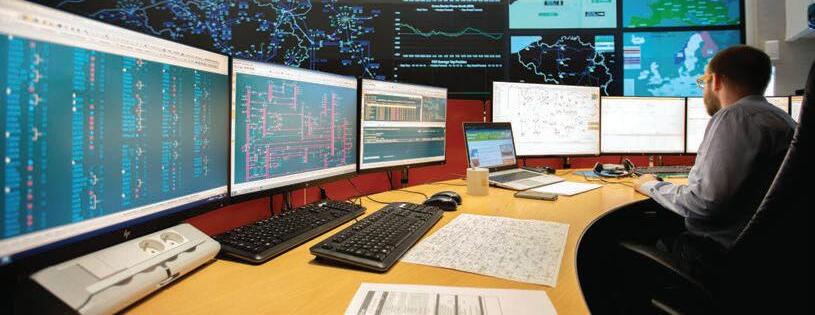
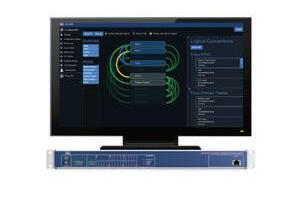


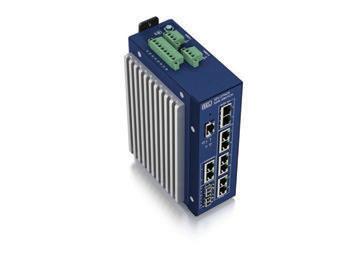


Controlling ignition sources, heat or fire, is critical when dealing with operations involving flammable materials. Such accidents often occur in commercial kitchens such as food courts and sometimes in central or industrial kitchens. One common cause is a gas pipe leak. In a kitchen area, there are many common ignition sources, such as refrigerators and appliances. So total elimination of ignition sources is not practical. In a kitchen situation, it is more crucial to control the amount of gas through early leak detection to prevent an explosion.
Installing a leak detection system and an automatic shut-off valve on the gas supply would be good safety features as these will be able to trigger the nearest occupier to aerate the area. The MS 930 was revised in 2017 to incorporate a gas detection system. As natural gas (NG) and liquified petroleum gas (LPG) have different specific densities, engineers should take note of this in detector placement and design.
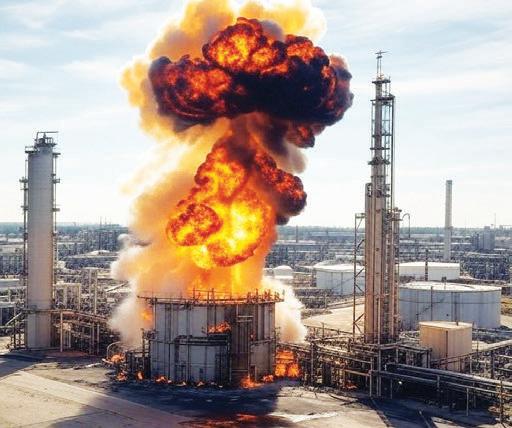
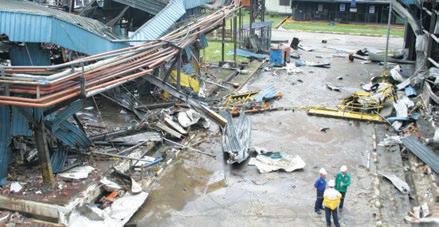
Dust explosion is another type of chemical explosion. This can occur when fine combustible particles (e.g., coal, grain or sugar) are suspended in the air and there is a delayed ignition. However, dust explosion incidents are rarely reported in the news. Due to limited awareness about such risks, safety precautions to prevent dust explosions are often inadequately addressed or even overlooked entirely. There should be increased awareness of dust explosions in the agriculture sector as
storage and handling of dry materials can generate dust. One fatal case happened in Lumut, Perak, in March 2008 where cornstarch dust in the tunnel of a flour factory was ignited when welding was performed without proper precautions taken.
Industrial dust explosion can happen when material is machined, ground or pulverised. This dust or powder can be organic material (paper, plastic, and wood) or metal (aluminium, magnesium, and titanium). These present an
exceptional hazard when handled in a silo or are accumulated in a dust collector. An aluminium dust explosion happened in Penang in November 2010 and a wood-work factory had a dust explosion in Gebeng, Pahang, in August 2014. A comprehensive risk assessment (RA) and process safety management (PSM) should be conducted when combustible dust is present and forms a dust explosion risk.
Some chemicals are naturally reactive and can react dangerously when mixed with other materials or when there is a temperature change. This is due to their molecular structure, which produces new compounds and, at the same time, releases energy like heat or other gaseous by-products. Changes in temperature can destabilise these chemicals, causing them to react uncontrollably, often resulting in an exothermic reaction, then speeding up the reaction in what’s called thermal runaway. The phenomenon can damage the piping or vessels containing the chemicals, leading to catastrophic explosions, especially in
chemical refinery processing plants. Chemical explosions often get wide media coverage as there could be fatalities, major property damage, and a fiery mushroom cloud and smoke visible from afar.
The engineering team on a project and operation will have the important role to design the plant with utmost safety and care, with appropriate redundancies and safeguards built in. Operations should not change parameters or recipes unless the reaction has been fully calculated, modelled or piloted.
Mechanical explosions are caused by sudden mechanical failure or pressure release. This normally involves heavy machineries and include boiler or pressure vessel explosions due to overpressure, thermal stress or material failure. Even if the pressure vessel or boiler
is constructed with essential safety features, failure due to relying on human factors or negligence can still happen. For example, if the low water level in a boiler is not identified earlier by the boilerman, it can lead to an explosion.
Mechanical explosions can occur due to compressed gas and include the rupture of cylinders or tanks containing high-pressure gases. In addition, mechanical explosions can be caused by a hydraulic explosion. This occurs when a hydraulic system fails catastrophically, releasing stored energy.
When a vessel contains hydrocarbons, the resulting fire and explosion on top of the initial mechanical explosion, will be more devastating. The vaporising hydrocarbons may result in multiple explosions. The flaming hydrocarbons can be thrown a long distance, starting multiple fires when
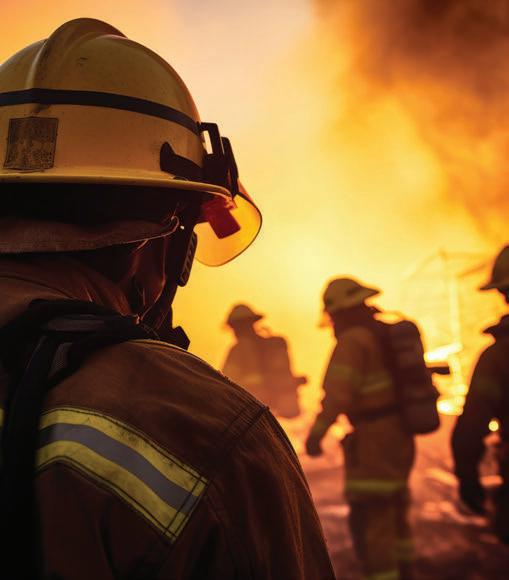
these land on other fuels. In a typical plant, there will be many vessels and tanks, and each will rupture in turn when exposed to fire. Hence, an automatic fire/explosion protection system should be in place.
Mechanical explosions can result from component failure due to corrosion, erosion, wear and tear or fatigue. These issues may be caused when maintenance personnel lack the necessary skills or experience or because of obsolete or inadequate maintenance instructions in the manuals, the skipping of regular inspections or routine checks, poor quality of replacement parts (i.e. substandard or incompatible parts) or not adhering to a schedule for preventive maintenance.
These maintenance-related issues can set the stage for catastrophic failures. Past explosions in ammonia refrigeration plants at food processing facilities, were caused, in part, by overfill prevention system failure, maintenance oversight or where corrosion was a significant contributing factor. It is crucial to ensure robust, wellinformed, and regularly updated maintenance practices. An ammonia refrigeration system explosion not only causes plant damage and severe injury to humans but also environmental pollution and mass neighbourhood evacuation.
Electrical explosions in industrial settings may be triggered by electrical system faults. Arc flash is a high-power discharge where short circuit or electrical equipment failure energy is released through the air. The intense heat generated by an arc flash can vaporise metals, leading to a rapid pressure increase and potential explosion. This happens during electrical switching or when working on live electrical systems without adequate safety measures. An arc flash can be controlled through equipment inspection and maintenance, proper design and periodical review when system change and, most importantly, wearing proper personal protective equipment (PPE) during switching.
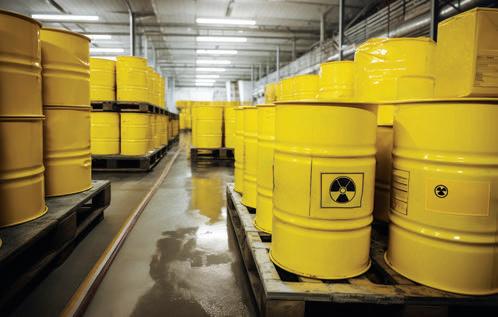
Another growing type of electrical explosion in modern society is battery explosion. This is especially so with the increase in use of renewable energy and the need to store that energy. Batteries explode when they are overcharged, overheated, short-circuited, and finally, a thermal runaway (such as in the chemical explosion discussed earlier). Battery explosions happen when a thermal runaway cascade and other adjacent battery cells are involved. The advantage of lithiumion batteries is their high energy density and their ability to store a significant amount of energy in a compact space. But the flammable electrolytes they contain can result in a fire that’s intense and hard to control. Fortunately, researchers have developed safer batteries, such as sodium-ion batteries which should be commercially available soon.
electrical overload. The resulting heat can ignite nearby materials or cause the insulation to melt, leading to an explosion if there is flammable gas, vapour or combustible dust present within a confined area or equipment.
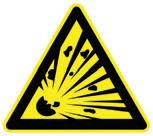
Static electricity is a silent and common source of electrical ignition. In environments where flammable gases or dust are present, a static discharge can ignite an explosion. This is common in grain elevators or chemical processing plants where materials move on conveyor belts or pipes, and static accumulation happen. Preventive measures include regular maintenance of electrical systems, using antistatic or dissipative materials, grounding and bonding all metal parts and pipes, or installing ionisers.
explosive atmospheres must comply with the MS IEC 60079 standards. The Ex equipment is designed and engineered as a protective measure to reduce the likelihood of explosion due to ignition by arcs, sparks or hot surfaces, as produced either during normal operations or under specified fault conditions.
Engineers should ensure electrical equipment is certified by a recognised body. Proper electrical equipment should be selected based on the equipment group, safety category, gas group, protection level, and temperature. A hazard area classification (HAC) study should be made for Ex-area zoning. The Ex installation should be verified by a person competent in Ex and IEC 60079 standards.
A physical explosion is a sudden release of mechanical energy. In Malaysia, most such cases in the past were related to pressure vessels. An example of a physical explosion is BLEVE (Boiling Liquid Expanding Vapour Explosion). This happens when a pressurised vessel is exposed to high heat, causing rapid vaporisation, pressure buildup and, ultimately, vessel failure and rapid release of the vapour. In an industrial kitchen, a jacketed oil cooker exploded due to expansion of the overheated internal oil and overpressurisation. After the explosion, it was discovered the safety relief valve malfunctioned because it was clogged.
Large electrical faults can cause an electrical explosion. Smaller electrical faults should be controlled as these are often the ignition sources for fire or explosions. When too much current flows through the circuit capacity, there will be an
When there may be a potentially explosive atmosphere (abbreviated as 'Ex'), ensure the use of appropriate electrical equipment. An explosive atmosphere refers to a mixture of hazardous substances with air under atmospheric conditions— such as gases, vapours, mists, or dust—which can ignite. Electrical equipment designed for use in
Another type of physical explosion is related to pressure vessels experiencing temperature variations. Cryogenic operations involving very low temperatures are prone to such an explosion. Cryogenic explosions occur when cryogenic fluid (e.g. liquid nitrogen) is exposed to heat and there is rapid expansion. When very low temperature fluid is mixed quickly with a higher temperature fluid, there will be a huge amount of energy released at a rapid rate. The material property at low temperature is also significantly lowered, especially its strength and embrittlement. Hence any process
parameter change should consider the vessel condition and age and, if necessary, re-engineering calculations should be performed.
Chemical explosions are the most common and engineers should understand the explosivity and parameters to consider (See Table 1).
Engineering design measures should control the fuel-air mixture, ventilation, and ignition sources. If concentration is below the lower explosion limit (LEL), the risk of explosion is avoided. Temperature can influence the LEL-UEL range. Operating above the upper explosion limit (UEL) is not wise as additional ventilation will bring it into range. Burning velocity is the rate of flame propagation relative to the velocity of the unburned gas that is ahead of it and the maximum pressure developed in a contained deflagration is important to design damage limiting construction –otherwise the vessel will explode or the building will collapse.
As Malaysia aspires to adopt a hydrogen economy, engineers should note the increased risks that this material presents and then implement the best practices.
Here are some guidelines for mitigating explosion risks and reducing the likelihood of explosions while enhancing workplace preparedness and complying with safety standards.
1. Minimise flammable substances through elimination or reducing where possible.
2. Control the material concentration by maintaining fuel-air mixtures outside explosive ranges.
3. Identify combustibility and particle size of dust to evaluate risk and review the Safety Data Sheet.
4. Eliminate ignition sources by preventing sparks, static electricity, or heat sources in hazardous areas.
5. Install detection systems (as early warning devices) and explosive atmosphere equipment.
6. Develop clear operating instructions for handling flammable substances.
7. Educate workers on hazard recognition, emergency response, and safe practices.
8. Enforce a work permit system for high-risk tasks like hot work or confined space entry.
9. Train staff and check qualifications of those working with explosive materials and ensure the upkeep of their competency.
10. Mark hazardous zones, equipment, and substances.
11. Design for safety, considering explosion-resistant structures, ventilation, and containment systems.
This article addresses several types of explosions. When there is a combination of two or more types, this will lead to hybrid explosions. A chemical reaction may trigger a mechanical explosion, or a dust explosion may combine with a vapour cloud explosion. The explosion cases discussed here have been thoroughly investigated by the DOSH Forensic Engineering Division. It is hoped
that this will serve as an important reminder on potential dangers lurking in industrial settings across the country. Each type of explosion presented highlights the need to be vigilant and stakeholders are urged to critically assess the explosion risks. Employers and workplace/business owners should identify these risks and implement precautionary measures in the management, maintenance, and safe operation of machinery and plant. There are engineering solutions to reduce an explosion risk and adhering to standards should be the norm.
by:

Chairman of the Safety in Engineering Special Interest Group (SESIG), IEM, he is with Forensic Engineering Division, DOSH Malaysia, specialising in workplace accident investigations, failure analysis, and forensic engineering.

Committee member of IEM’s Building Services Technical Division (BSTD) and Secretary/ Treasurer of the SESIG. In 2016, he became an Approved ISO 31000 Lead Trainer certified by the Global Institute for Risk Management Standards.

Senior Consultant at TÜV SÜD GRC, he was formerly Chairman and Advisor of IEM’s Mechanical Technical Division (METD) and a Fire Advisory Board (FAB) committee member.


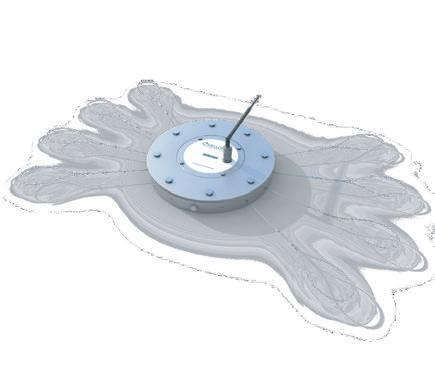
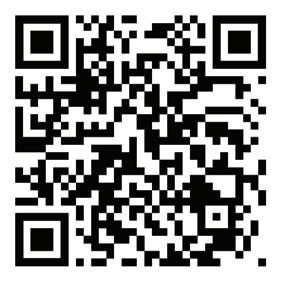











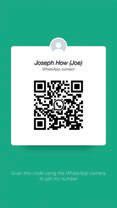
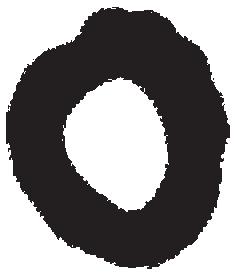
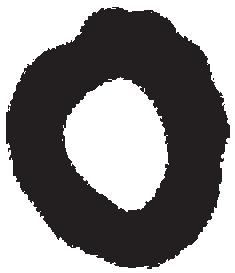


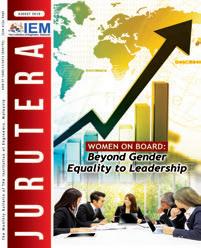

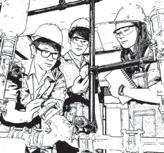





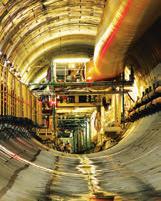

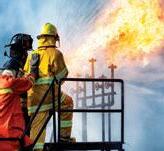

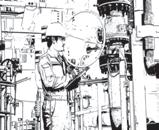
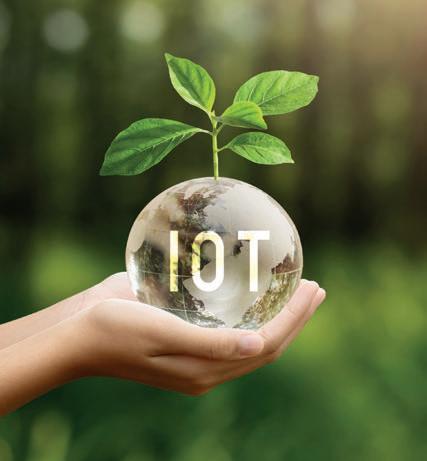








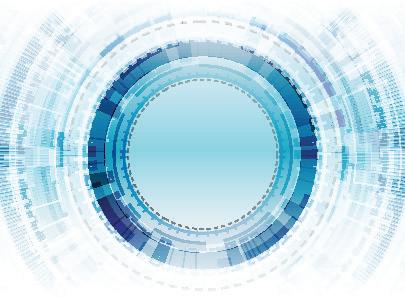




















by:


Fellow Researcher at the Centre for Engineering Education and is from the Faculty of Chemical & Energy Engineering, Universiti Teknologi Malaysia.
Ir. Assoc. Prof. Dr. Mazura Jusoh
From the Faculty of Chemical & Energy Engineering, UTM, she is Head of Advanced Materials & Separation Technology Research Group and Fellow Researcher at the Centre for Lipid Engineering & Advanced Research.
Safety engineering has evolved dramatically over the years, reflecting the increasing complexity of industries and societies worldwide. Initially grounded in basic hazard prevention, safety engineering education has expanded to encompass comprehensive strategies for risk management, environmental protection, and technological advancements. The growth has been influenced by global trends, local needs, and collaborative contributions from governments, industries, educational institutions, and society at large. This article explores the development of safety engineering education globally, with a focused analysis on its trajectory in Malaysia, highlighting key contributions and exemplary practices.
The roots of safety engineering education can be traced back to the industrial revolution in the late 18th and early 19th centuries (International Labour Organisation, 1981). As industries mechanised and expanded, workplace hazards became increasingly apparent, necessitating structured approaches to safety. Early safety training was rudimentary, often reactive, and centred on accident prevention rather than proactive risk management.
In the mid-20th century, the rapid growth of industries such as chemical manufacturing, mining, and construction spurred the need for specialised safety engineering programmes. Institutions in the United States and Europe pioneered formal safety curricula, focusing on occupational safety, fire prevention, and equipment safety. For instance, Purdue University introduced a safety engineering course in the 1950s and the University of Michigan followed with programmes tailored to industry needs (Smith & Johnson, 1998). Both universitites introduced dedicated safety engineering courses as early as the 1950s to address industry-specific needs.
By the late 20th century, global catastrophes such as the Bhopal disaster in 1984 and the Chernobyl nuclear meltdown in 1986 underscored the need for robust safety protocols and comprehensive education. These events prompted the integration of risk analysis, system safety, and environmental management into academic programmes. International bodies such as the International Labour Organisation (ILO) and the World Health Organisation (WHO) also played crucial roles in establishing safety standards and advocating for education to mitigate workplace hazards (International Labour Organisation, 1981; World Health Organisation, 1986).
In the 21st century, safety engineering education embraced technological advancements, including artificial intelligence, big data analytics, and virtual reality simulations, to train students in hazard identification and risk mitigation. Universities worldwide now offer specialised degrees in safety engineering and interdisciplinary approaches integrating environmental science, health and technology have become the norm.
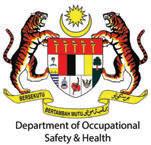
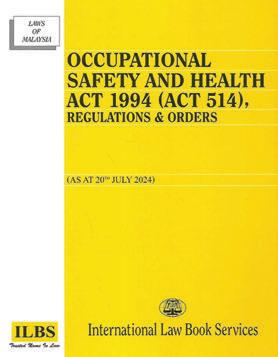
Malaysia’s journey in safety engineering education reflects its industrial growth and commitment to public welfare. Before the 1980s, safety-related training in Malaysia was limited to basic occupational health and safety (OHS) practices, often delivered through on-the-job training. However, with industrial expansion in the late 20th century, the need for formal safety education became evident.
1. Early Developments (1980s-1990s)
The establishment of the Department of Occupational Safety & Health (DOSH) in 1994 marked a turning point in Malaysia’s safety landscape (Ministry of Human Resources Malaysia, 1994). DOSH played a pivotal role in enforcing the Occupational Safety & Health Act 1994 (OSHA 1994), which mandated organisations to prioritise worker safety and health. This legislative shift spurred the inclusion of safety topics in technical and vocational education programmes, ensuring that future workers and engineers had a foundational understanding of workplace hazards and risk management.
During this period, local universities, such as Universiti Teknologi Malaysia (UTM) and Universiti Sains Malaysia (USM), began incorporating safety modules into engineering programmes. These initiatives were often influenced by collaborations with international institutions and the growing presence of multinational corporations here. The introduction of workplace safety courses in technical and polytechnic institutions also helped bridge the gap between academic knowledge and industry needs, producing graduates with basic safety competencies.
2. Expansion & Specialisation (2000s)
The 21st century saw significant advancements in Malaysia’s safety engineering education. Universities began offering specialised programmes, such as the Bachelor of Occupational Safety & Health Management at Universiti Malaysia Pahang (UMP) and postgraduate degrees in industrial safety at UTM. These emphasised hazard control, safety legislation, environmental management, and industrial risk assessment, creating a more specialised workforce equipped to handle complex safety challenges.
The Malaysian Qualifications Agency (MQA) introduced accreditation standards for OHS programmes, ensuring consistency and quality in education. Additionally, professional certifications, such as the Certified Safety & Health Officer (CSHO) credential, became integral to career advancement, aligning academic qualifications with industry needs. The demand for safety professionals also led to the establishment of short courses and diploma programmes catering to working professionals looking to upskill in occupational safety.
Malaysia also began participating in regional and international safety initiatives, collaborating with organisations such as the International Labour Organisation (ILO) and the ASEAN Occupational Safety & Health Network (ASEAN-OSHNET). These collaborations facilitated knowledge exchange and improved Malaysia’s safety education curriculum by incorporating global best practices.
3. Integration of Technology (2010s-Present)
With the advent of Industry 4.0, local institutions have embraced technologydriven safety education. Virtual reality (VR) and augmented reality (AR) are now used in universities to simulate hazardous environments, providing students with practical, risk-free training. These technological advancements not only enhance learning experiences but also prepare students for the modern industrial landscape, where digital tools play a crucial role in safety management. Researchers at Monash University are leveraging VR to enhance engineering students’ understanding of process safety by providing immersive, danger-free simulations of hazardous industrial environments.




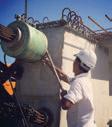
Nehemiah-OVM provides the following products and services:
- Post-tensioning solution provider
- Carpark Flat Slab
- Transfer Plate
- Beams, Box Girders
- Alternative design solutions
- Cable systems (stay cable main cable hanger)
- Bridge bearing and expansion joint
- Construction solutions (heavy lifting, ILM, etc)
- Monitoring, repairing and strengthening for structures




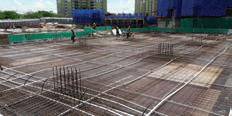
Prestress Sdn Bhd (1140945-A)
No. 45-3, Jalan PJU 5/20
The Strand, Kota Damansara 47810 Petaling Jaya
Selangor Darul Ehsan
Tel : 603-61426638
Fax : 603-61426693

Email : enquiry-pt@nehemiah-grp.com
Certified by the European Organization for Technical Approval
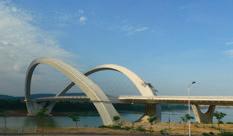


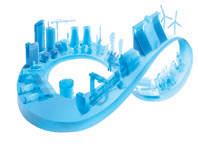
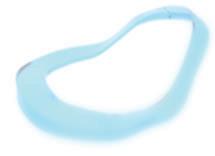

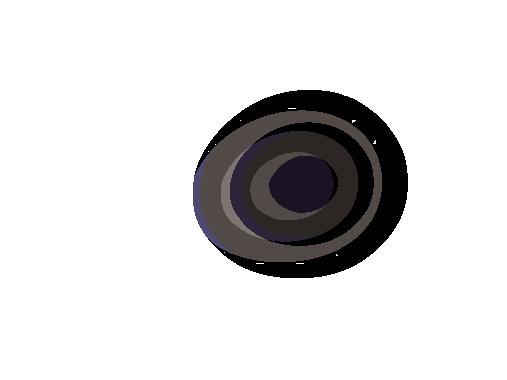






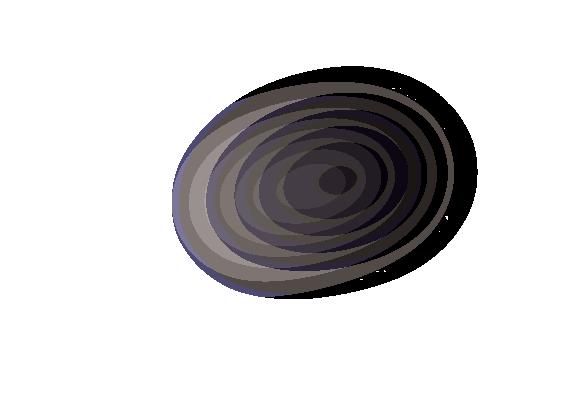
This innovative approach allows students to visualise complex safety scenarios, improving their decision-making skills and hazard awareness in real-world engineering applications.
In addition to VR and AR, the integration of data analytics, machine learning, and IoT (Internet of Things) technologies has transformed safety education. Universities now teach predictive safety analytics, enabling students to assess risks using real-time data from industrial sensors and automated monitoring systems. This shift has led to the development of research initiatives that explore AI-driven safety solutions, further aligning safety engineering education with contemporary industry needs.

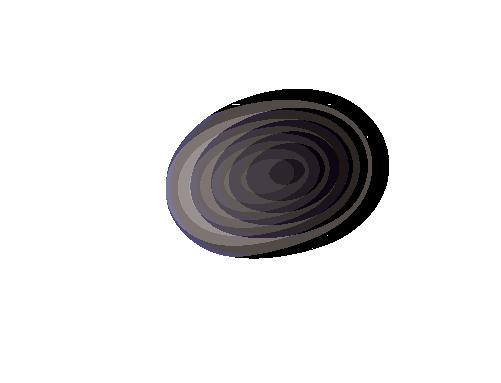




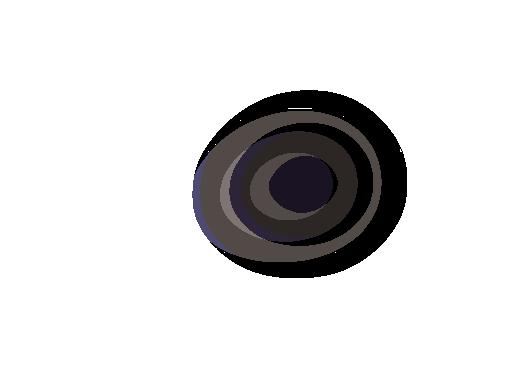
Collaborative initiatives, such as the National Institute of Occupational Safety & Health (NIOSH) Malaysia’s training programmes, have further enhanced the skill sets of safety professionals. These programmes emphasise digital tools, data analytics, and system integration to address modern safety challenges. The government has also supported safety research by funding projects that investigate innovative safety solutions, such as wearable sensors for monitoring worker health and AI-powered safety inspections.
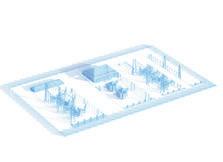
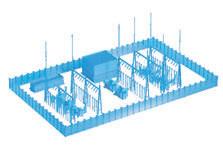
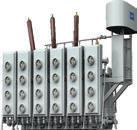




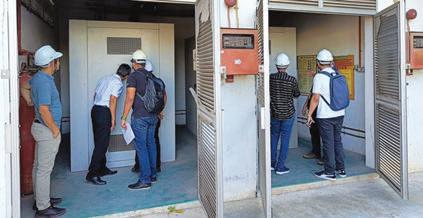
The development of safety engineering education in Malaysia and globally is a collective effort involving various stakeholders. Each sector played a unique role in shaping the discipline.
Government Initiatives: Governments worldwide have been instrumental in advancing safety education through legislation, funding, and policy development. In Malaysia, OSHA 1994 and subsequent amendments underscore the government’s commitment to safety. The Ministry of Human Resources, through DOSH and NIOSH, has established frameworks for safety training, certification, and awareness campaigns. Furthermore, the Malaysia Education Blueprint 2015-2025 emphasises the integration of safety principles in technical & vocational education and training (TVET), ensuring that graduates are well-equipped to meet industry demands.





Industry Contributions: Industries have significantly influenced safety engineering education by identifying skill gaps and fostering academiaindustry collaborations. Multinational corporations, such as Petronas, have partnered with universities to develop tailored safety curricula. Industrydriven training programmes, internships and apprenticeships have also provided students with practical experience, bridging the gap between academic knowledge and real-world applications.
Educational Institutions: Universities and colleges serve as the backbone of safety engineering education, offering programmes that combine theoretical knowledge with practical training. Malaysian
universities have made significant strides in integrating global best practices, fostering interdisciplinary research, and utilising technology to enhance learning outcomes. Collaborative research initiatives, such as UTM’s partnership with international institutions, have expanded the scope of safety education. These collaborations have led to the exchange of expertise, development of innovative teaching methods, and access to advanced resources.
Societal Impact: Societal awareness and advocacy for safety have driven the evolution of safety engineering education. Non-governmental organisations (NGOs) and professional bodies, such as the Institution of Engineers, Malaysia (IEM), have organised workshops, seminars, and campaigns to promote the safety culture. In 2022, Safety Engineering Special Interest Group (SESIG) was established under IEM and has initiated various safety engineering related activities. Public demand for higher safety standards in workplaces and communities has also compelled organisations to prioritise safety training. For example, initiatives such as the government’s Safe@Work campaign, have fostered a proactive approach to safety management.
The evolution of safety engineering education in Malaysia has been significantly shaped by the adoption of global safety standards. As industries expanded and occupational hazards grew more complex, integrating international frameworks became crucial. Standards such as ISO 45001, OSHA regulations, and ILO guidelines played a key role in structuring safety curricula in local universities and technical institutions.
Before global standards were widely implemented, Malaysia’s safety education focused on national regulations like the OSHA Act 1994. However, with growing international trade and collaboration, safety professionals needed to adopt global best practices. This shift led to the incorporation of ISO standards and OSHA guidelines into university syllabi, ensuring graduates were prepared for local and multinational roles.
One key influence is ISO 45001, introduced in 2018, which emphasises risk management, hazard identification, and continuous workplace safety improvement. Universities like UTM and UMP have integrated its principles into safety engineering programmes, training students in risk assessment and compliance.
Additionally, professional certification programmes such as CSHO align with international standards. NIOSH Malaysia updates training modules based on evolving global standards, reinforcing standardised safety practices in industries such as oil and gas, manufacturing, and construction.
By embedding global safety principles, Malaysia improved workplace safety and enhanced the global employability of its graduates. As international regulations evolve, institutions must remain dynamic and adaptive to ensure graduates stay at the forefront of occupational safety innovation.
Following are some real case studies of safety engineering education in Malaysia:
NIOSH Malaysia has been a pioneer in providing professional safety training and certifications. Its programmes, such as the Safety & Health Officer (SHO) certification, are recognised globally and have contributed to the professionalisation of safety engineering in Malaysia. Beyond certifications, NIOSH also conducts industry-specific training tailored to sectors such as construction, oil and gas, and manufacturing, ensuring safety professionals are well-equipped for diverse workplace environments.
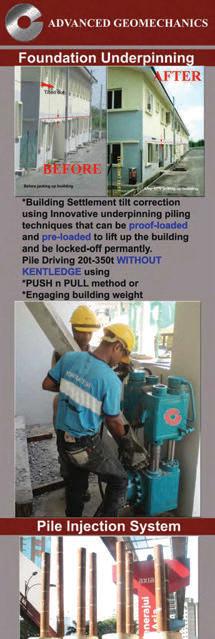


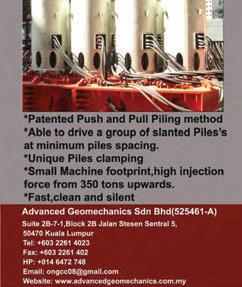

The Professional Skills Certificate (PSC) elective courses at Universiti Teknologi Malaysia (UTM) provide undergraduate chemical engineering students with essential safety engineering education. The OSHE for Engineering Industry & Laboratory course focuses on risk assessment, safety regulations, and emergency response in industrial and laboratory environments, ensuring compliance with OSHA 1994 and ISO 45001 standards. Similarly, the OSHE for Construction Industry & Laboratory Works course covers construction site safety, personal protective equipment (PPE), and risk management, aligning with CIDB and OSHA requirements for engineers involved in industrial plant construction, hazardous material storage, and pipeline installations. These courses prepare students to implement safe work practices and regulatory compliance measures in engineering workplaces.
One of the best practices in teaching safety engineering is to conduct site visits to industrial facilities, construction sites or laboratories as this allows students to observe realworld safety implementations. These visits provide handson exposure to safety protocols, hazard identification and risk assessment, reinforcing theoretical knowledge through practical applications. By witnessing safety measures in action, students develop a deeper understanding of workplace hazards, regulatory compliance, and the importance of maintaining a safe working environment in engineering industries.
Despite the progress made, challenges remain in ensuring widespread adoption of advanced safety engineering education. One of the key issues is the accessibility of high-quality safety training for smaller industries and SMEs (small and medium-sized enterprises) which may lack the resources to invest in sophisticated safety technologies. To address this, universities and training institutions are working towards more affordable and scalable e-learning platforms, offering online safety courses and certifications that can reach a broader audience.
Another challenge is the need for continuous curriculum updates to keep pace with emerging risks, such as those related to automation, robotics, and green energy industries. As Malaysia moves towards a more sustainable industrial future, safety education must also incorporate environmental risk assessments and sustainability-driven safety management strategies.
Malaysia has made significant strides in safety engineering education, evolving from basic workplace safety training to a sophisticated, technology-driven approach. With continued investment in research, collaboration, and digital learning, Malaysia is wellpositioned to enhance safety education and to produce highly skilled professionals capable of tackling the safety challenges of the future.
The evolution of safety engineering education reflects a dynamic interplay between global trends, local needs, and contributions from various stakeholders. In Malaysia, significant progress has been made through legislative frameworks, industry-academia collaborations, and technological integration.
As the world continues to face new challenges, the commitment to advancing safety education remains critical, ensuring that future professionals are equipped to create safer workplaces and communities. Continuous research and innovation in safety methodologies, including digital tools such as VR-based training and AIdriven risk assessment, will further enhance learning outcomes. By fostering a culture of lifelong learning and professional development, Malaysia can strengthen its position as a leader in safety education and workplace risk management.
[1] International Labour Organisation. (1981). Occupational Safety and Health Convention (No. 155). Geneva: ILO.
[2] Ministry of Human Resources Malaysia. (1994). Occupational Safety & Health Act 1994. Kuala Lumpur: Percetakan Nasional Malaysia Berhad.
[3] National Institute of Occupational Safety & Health (NIOSH) Malaysia. (2023). Training and Certification Programmes. Retrieved from www. niosh.com.my
[4] Universiti Teknologi Malaysia (UTM). (2023). Innovations in Safety Engineering Education. Retrieved from www.utm.my
[5] World Health Organisation. (1986). Principles of Safety Engineering in Public Health. Geneva: WHO.

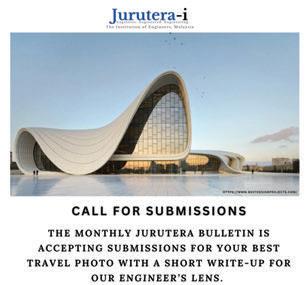


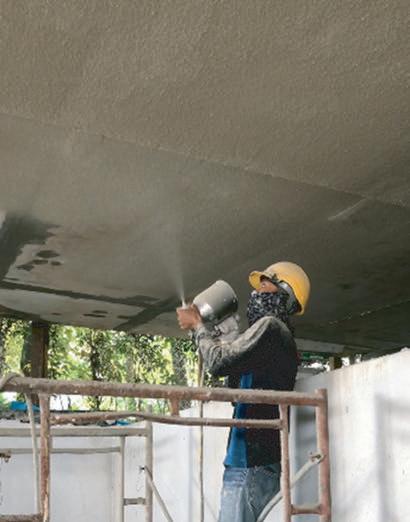
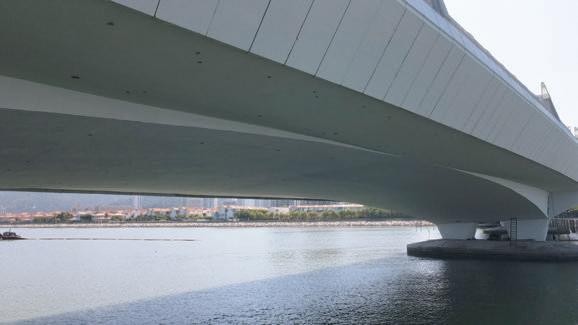
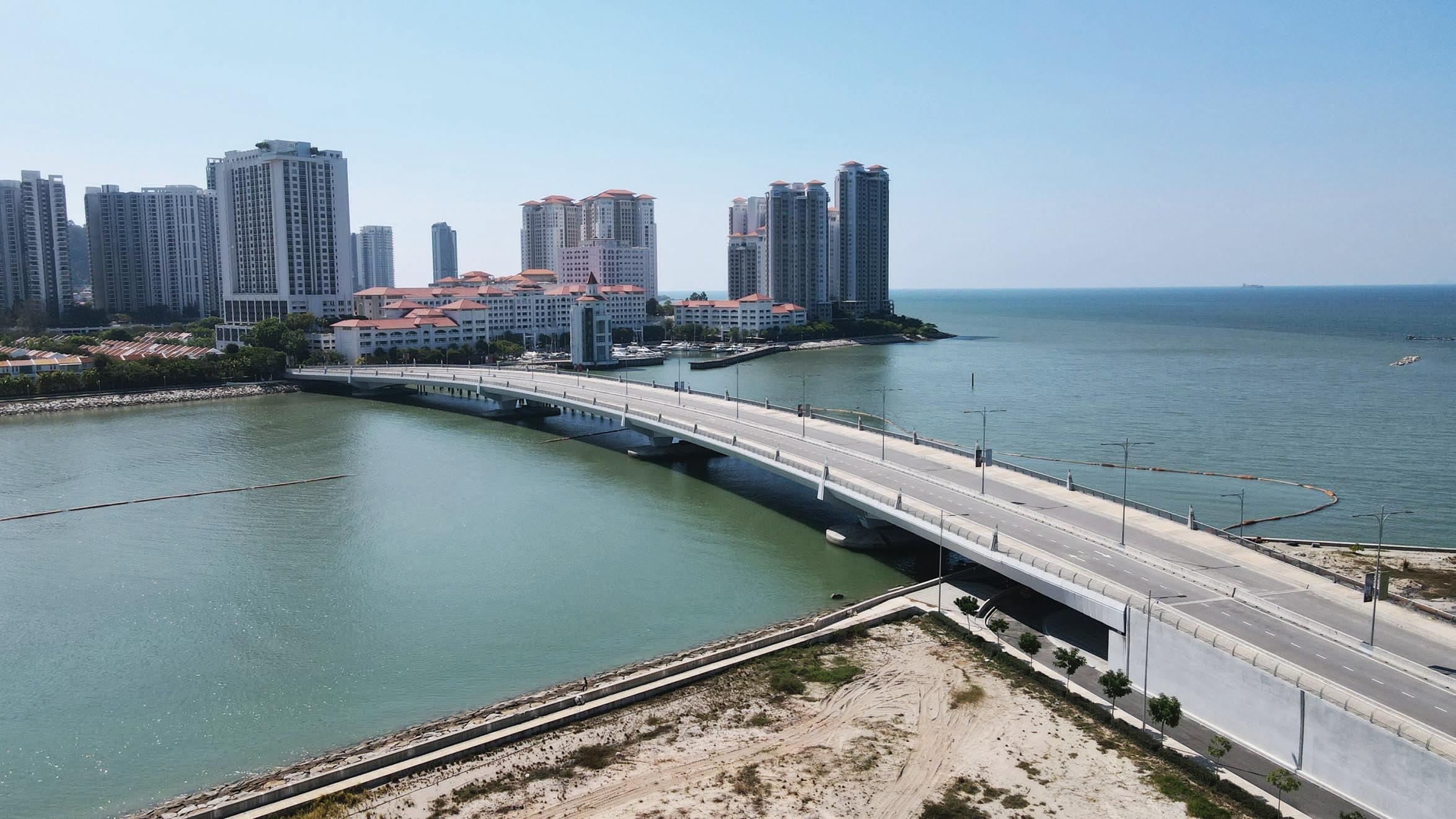
by: Ir. Dr. Jegalakshimi Jewaratnam

Professional Engineer registered with the Board of Engineers Malaysia, a Chartered Engineer registered with the Engineering Council, UK and a member of IEM as well as senior lecturer in Department of Chemical Engineering, Universiti Malaya.
Have you ever walked into a university building feeling fine but left with a headache, sneezing, fatigue, unusual tiredness or even drowsiness? Are institutions entrusted to produce safety competent graduates, safe? Do age-old Malaysian university buildings provide a safe environment for the stakeholders?
Just like any other old building, ageing university buildings have an impact on the stakeholders. There is increasing concern among academics, administration staff and students who spend a significant amount of time on campus, so it is vital that universities provide a safe and healthy working environment.
Key safe and healthy working environment concerns in Malaysian universities include:
• Infrastructure and facilities malfunction in Malaysian universities are a notable issue. Older buildings and campuses are beginning to show structural issues such as faulty wiring, poor lighting, inadequate fire safety measures, broken tiles, and slippery floors. These can lead to accidents, falls, and other injuries which may prove fatal. A report in May 2022 on poorly maintained university hostels and facilities, described them as “accidents waiting to happen”. The report followed the tragic death of a student in University Utara Malaysia (UUM) due to suspected electrical issues in her hostel. Additionally, there was a fire in a dormitory room in Universiti Malaya (UM) caused by a faulty fan that had not been repaired despite two reports made on the matter.
Leaking or collapsed ceilings after heavy rainfall, leading to flooding in classrooms and academic rooms are common. A case study on building maintenance management in Malaysian universities conducted by Universiti Petronas researchers indicated that maintenance practices were often reactive rather than proactive, leading to irregularities and inefficiencies. The absence of comprehensive maintenance management frameworks further exacerbated these problems.
• There have been recent reports highlighting new infrastructure/facilities malfunction in Malaysian universities. Common problems include architectural defects such as hairline cracks, water ponding on flat roofs, and damaged sinks. These issues often stem from poor workmanship, faulty design, and inadequate maintenance practices. Ongoing construction or maintenance work on campus can be hazardous if not properly managed. There are risks from falling debris, machinery, and other site-related dangers. Addressing these issues requires wellplanned maintenance strategies, focusing on proper construction practices and implementing robust maintenance management systems.
• Campus traffic, bike accidents, and pedestrian safety in large university campuses are concerns. Pedestrian walkways should be made available throughout the campus and these should also cater to blind and underprivileged students. Quality pavements are important to ensure safe mobility. Rental scooters and bikes are commendable to ease travelling around the campus for students and a proper pathway should be allocated for these slow-moving vehicles. It is not only dangerous for these to share the same lanes as cars but it will also affect traffic flow. Universities should often promote road safety awareness, enforce traffic regulations, and improve infrastructures.
• Campus crimes such as theft, assaults, and burglaries are common concerns. Universities may have campus police, but the presence of security personnel at check post and periodic surveillance are not sufficient to prevent incidents. Surveillance cameras should be placed in every building and funds set aside for their maintenance. Often, faulty cameras are not replaced and this is advantageous for those with bad intentions. Sadly, thefts and burglaries often end with the making of a police report as there is nothing much the police can do without CCTV footage.
There have been recent reports of assaults at Universiti Pertahanan Nasional Malaysia (UPNM). In November 2024, a first-year student suffered fractures to his ribs and spine after being stomped on by a senior student. This incident is part of a troubling pattern of bullying and assault at UPNM, and previous cases included severe injuries and even fatalities. Stringent punishment and close monitoring of students are necessary to prevent such incidents. The students should undergo personality tests for early detection of sadist/narcissistic patterns. Such students should be given counselling and closely monitored to ensure the safety of other students. Increased roll calls at odd hours can help prevent such incidents.
• Sexual assault and harassment in universities are also of significant concern, with several recent reports highlighting such issues. In Universiti Teknologi MARA (UiTM), over 15 students came forward with
allegations of sexual harassment against a lecturer who allegedly made explicit sexual remarks and engaged in inappropriate behaviour with students. In UM, there have been calls for an investigation into sexual harassment allegations against a professor who sent inappropriate pictures to a student. A survey by UM Feminism Club revealed that almost one in five students faced sexual harassment, including verbal, non-verbal, physical and visual. The survey concluded that students were not aware of the university’s AntiSexual Harassment Code and did not know what to do in such instances. In its memorandum, the club made recommendations for UM to establish an AntiSexual Misconduct Committee (ASMC) and to amend the existing anti-sexual harassment guidelines. A clear reporting channel, a proper framework for case investigation and fair punishment within a reasonable time frame should be established. Bystander intervention awareness is also vital. These incidents underscore the urgent need for better safety measures and maintenance in Malaysian universities. The Ministry of Higher Education (MOHE) has been urged to conduct independent audits and inspections to identify and address safety hazards.
• University academics often experience stress due to heavy workloads, pressure to publish research outcomes within a short period, and meeting academic performance targets. The demands on students, academics and administrators to maintain a high level of performance result in long working hours, negatively impacting work-life balance and contributing to mental health problems such as depression and anxiety. Cases of workplace harassment, be these be gender, racial or sexual, can create a toxic environment and affect mental well-being. There are concerns regarding insufficient institutional support for victims of harassment. Despite progress, gender discrimination and inequality still exist in some academic and administrative roles. Marginalised groups face double standard treatment on campus, impacting their mental and emotional well-being. Although universities offer counselling services, mental health support systems are not widely accessible to all staff members and students in need. Cultural factors may influence how mental health issues are perceived. Lack of awareness and stigma for open discussion may prevent individuals from seeking help.
• The COVID-19 pandemic had significantly impacted universities globally, including Malaysia. Social distancing, mask-wearing, and sanitation protocols were necessary to protect students, academics and staff. Post-pandemic, universities had to adapt to new forms of learning (hybrid, online), which led to physical and mental health challenges due to prolonged screen time and isolation. Some staff members and students are also dealing with long-term health effects after contracting COVID-19, including fatigue and mental fog.
• Academics, administrative staff and students spend long hours at the desk or in front of computers. Poor ergonomics and workspace design can contribute to musculoskeletal issues, eye strain, and other health problems. In many instances, we had administrative staff members struggling with outdated desktops and end-of-life mouses. The workspaces were often cramped and the office chairs did not support their backs. The height of the tables and chairs too were not adjustable to fit one’s comfortable positions.
Ensuring that desks, chairs, and computer stations are adjustable and that they support proper posture can help reduce musculoskeletal discomfort. Ergonomic chairs and desks can significantly improve comfort and productivity. Proper placement of monitors, keyboards, and mouses can prevent strain and injury. Lighting, temperature, and noise levels also play a crucial role in creating a comfortable learning and working environment. Regular evaluation of ergonomic practices can help identify and mitigate potential hazards. By prioritising ergonomics, universities can create a healthier and more productive environment for both students and staff.
• In universities with medical, science, and engineering programmes, laboratory environments pose the risk of exposure to hazardous chemicals, biological agents, and radiation. For academics and postgraduates, designated working spaces in/adjacent to laboratories that store hazardous chemicals can cause acute and chronic health effects. A substantial exposure period can prove fatal. Losing top intellectuals to such negligence is a great loss to our nation. A study involving four public universities in Malaysia assessed the knowledge, attitudes, and practices of laboratory workers in OSHMS certified and non-certified universities. The results showed that certified universities had higher percentages of good OSH practices compared to non-certified ones. The Pusat Penyelidikan Institut Ibnu Sina at Universiti Teknologi Malaysia (UTM) was temporarily closed in August 2019. The closure was initiated by the Jabatan Keselamatan dan Kesihatan Pekerjaan (JKKP) Johor due to non-compliance with safety standards, including the lack of a proper occupational safety and health management system. UTM took the matter seriously and worked to improve the safety conditions. The Higher Education Ministry in Malaysia also closed down several private colleges for failing to comply with safety and educational standards. A study conducted at USM assessed chemical safety awareness among university laboratory workers. The study found that while the level of awareness was moderate, continuous training related to personal protective equipment (PPE) was recommended to enhance safety practices. Staff and students need proper training on safety protocols, usage of protective equipment, and proper disposal of waste materials. Hazardous chemicals should be stored far from stakeholders dwelling areas. All laboratories in universities should conduct Chemical Health Risk Assessments periodically.

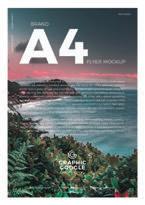


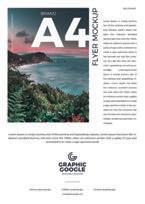



Annual Reports • Booklets • Brochures • Buntings • Business Cards
CD / DVD Replications • Calendars • Cards & Invitations • Certificates
Custom Printings • Envelopes • Folders • NCR Bill Books • Notepads
Leaflets • Letterheads • Paper Bags • Posters • Stickers • Others





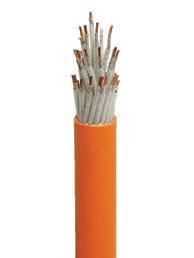

its visions and missions for the next 3-5 years. The safety, health and environment section should be detailed out, taking into consideration relevant components from Occupational Safety & Health (Amendment) Act 2022 - Act A1648.


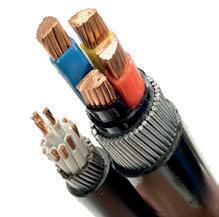

Awareness and Training: There may be insufficient emphasis on health and safety education for staff and students. Universities must prioritise educating their community on maintaining a healthy workplace and how to prevent accidents or health problems.
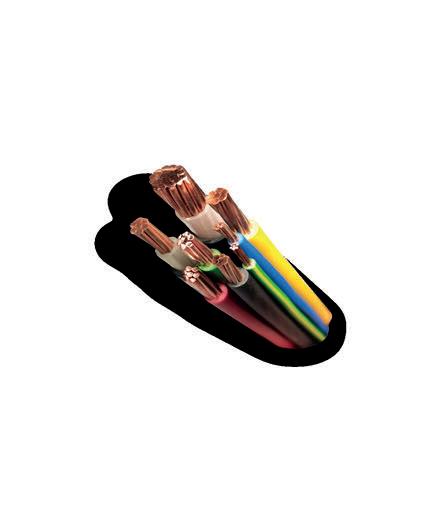
Compliance with OSHA Standards: Malaysian universities are subjected to Occupational Safety & Health Act (OSHA) regulations, but enforcement and adherence to these standards can vary across institutions. There may be gaps in the enforcement of safety regulations in areas such as fire drills, evacuation plans, and workplace ergonomics.
COVID-19 and Health Protocols: The global pandemic introduced health and safety concerns that extended beyond traditional risks. Universities must address issues related to social distancing and mask-wearing as well as provide safe learning environments.

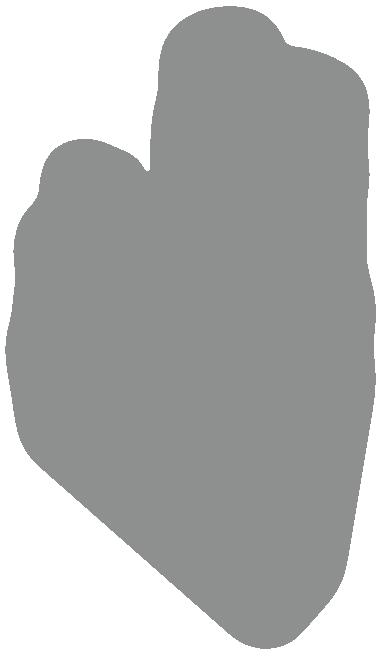



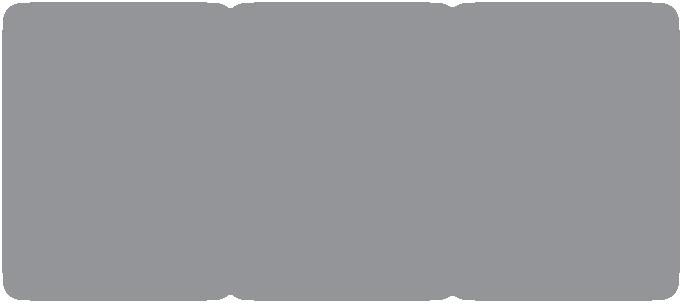

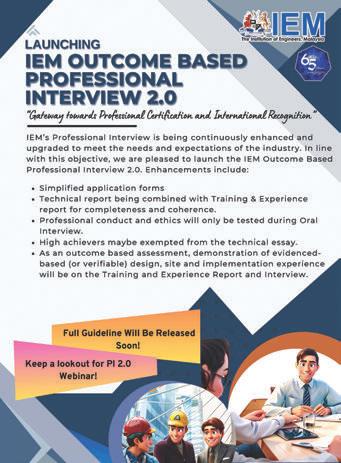


Mental Health & Suicide Prevention: Many staff members and students face mental health challenges such as stress, anxiety, and depression, which may lead to suicide or other dangerous behaviours. Universities should increasingly focus on providing better mental health resources, counselling services, and awareness programmes.
Proactive Maintenance: Shift from reactive to proactive maintenance by regularly inspecting and servicing facilities to prevent issues before they become major problems. Implement IT-based maintenance management systems to streamline maintenance activities, track issues, and schedule repairs efficiently.
Stakeholder Engagement: Involve students, academics, and staff in reporting issues and to provide feedback on facility conditions. Establish clear communication channels for reporting maintenance issues and ensure timely responses to reported problems. In Universiti Malaya, the UMHelpDesk unit captures the timelines between reporting and step-bystep process until the issue is resolved. It is an efficient system that ensures transparency in communications and jobs done. This can help identify problems early and ensure that maintenance efforts are aligned with user needs.
Investment in Technology: Utilise modern technologies such as IoT sensors and smart building systems to monitor facility conditions in real-time and automate maintenance processes. The University of Sydney uses Smart Sustainable Building Network, leveraging on nanotechnologies to enhance indoor climate, ventilation, and air quality. The outcome focuses on occupant comfort, health, and productivity, thus aiming for sustainable and energy-efficient building designs.










By adopting these strategies, universities can significantly improve the condition and reliability of their infrastructure and facilities, creating an environment that’s safer and more conducive for learning and research. Efforts are needed to continuously address these challenges, ensuring that the working and learning environments are as safe and healthy as possible for everyone involved.
We are pleased to announce that the 24th AFEO Mid-Term Meeting will be hosted by the Vietnam Union of Science and Technology Associations (VUSTA) in Da Nang City, Vietnam, from 5 – 8 August 2025.
This prestigious event will bring together engineering organizations from across the ASEAN region to foster collaboration, innovation, and knowledge sharing.
For more details, please visit: https://www.youtube.com/watch?v =ofWWRjewcWI&themeRefresh=1
The Safety in Engineering Special Interest Group (SESIG) of The Institution of Engineers, Malaysia (IEM), organised a technical visit to Matrix Quantum Sdn. Bhd., an accredited steam boiler certification training school, on 11 January 2025. Located in Kampung Subang Baru, Shah Alam, Selangor, the school is dedicated to training professionals in the safe operation and maintenance of steam boilers.
Participants were warmly welcomed by Mr. Mohd Hazri Abdul Hamid, the Managing Director of Matrix Quantum Sdn. Bhd., who commenced the visit with a corporate presentation. Then SESIG Chairman Ir. Tajul Ariffin Mohamed Nori gave a speech which provided insights into recent legislative changes affecting the industry.
He highlighted that the Factories & Machinery Act 1967 (FMA 1967) was repealed in Malaysia effective 1 June 2024, through the Factories & Machinery (Repeal) Act 2022. As part of a broader initiative to improve occupational safety and health regulations, key provisions of the FMA 1967 were incorporated into the revised Occupational Safety and Health Act 1994 (OSHA 1994) under the Occupational Safety and Health (Amendment) Act 2022. Furthermore, he noted that boiler inspections, traditionally conducted by DOSH officers, might later be outsourced to licensed persons, reflecting an evolving regulatory landscape.
by:


aspects of boiler technology, focusing on enhancing understanding and promoting safe operation. He elaborated on the various boiler types and classifications, detailing their specific applications and operational characteristics. He provided an indepth analysis of the key components within a boiler system, emphasising their functions and interdependencies in ensuring optimal performance.
The discussion delved into the various causes of boiler explosions, emphasising the devastating consequences of such incidents. One of the most critical factors identified was inadequate water supply to the boiler, which could result in the overheating of boiler components, severe structural damage and, in extreme cases, catastrophic explosions. Absence of sufficient water leads to a dangerous increase in temperature, causing metal fatigue and potential rupture of the pressure vessel.
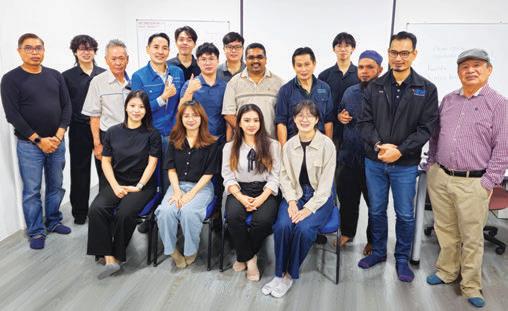
Following this, participants attended a comprehensive technical presentation by Mr. Mohd Hiswandy Ishak, Training Director of Matrix Quantum Sdn. Bhd. His presentation covered key
To mitigate these risks, it is mandatory for a Competent Boilerman registered with DOSH to operate a boiler at all times. These professionals are extensively trained to handle boiler operations, ensuring proper water level management, pressure regulation, and adherence to safety protocols. Their expertise significantly reduces the likelihood of operational failures which may lead to hazardous incidents.
In addition to the Competent Boilerman, Certified Steam Engineers are equally crucial in overseeing the safe and efficient integration of all critical components within the boiler system. Their responsibilities go beyond routine operations to include maintaining and optimising the system’s safety mechanisms. These mechanisms include multi-level alarm systems, low-water cutoffs, overpressure alarms, and pressure relief valve operations, all of which function as safeguards against potential failures.
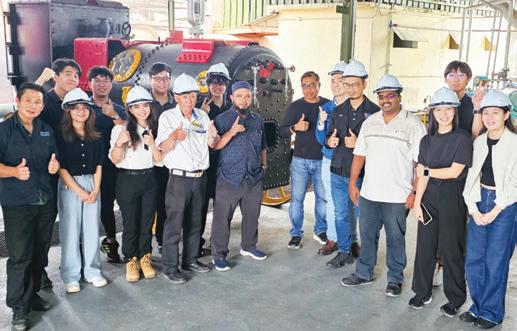
Certified Steam Engineers ensure that these components are regularly inspected, tested, and maintained to prevent malfunctions that may compromise boiler safety.
The technical presentation concluded with a comprehensive discussion on best practices for boiler operation, reinforcing the necessity to adhere to manufacturer guidelines, industry standards, and regulatory compliance measures. Several key topics were emphasised, including:
• Maintaining optimal water chemistry: Proper chemical treatment of boiler feedwater is essential to prevent scaling, corrosion, and sediment buildup, which can reduce efficiency and increase the risk of failure.
• Avoiding operational shortcuts: Operators must strictly follow established procedures, including pre-startup checks, gradual pressure buildup, and controlled shutdown processes to avoid unnecessary stress on boiler components.
• Implementing thorough documentation procedures: Accurate record-keeping of maintenance logs, inspection reports, and safety checks are crucial for regulatory compliance and early detection of potential issues. By adhering to these best practices, organisations can minimise risks, enhance operational efficiency, extend the lifespan of their boiler systems, and maintain a safe working environment for all personnel involved in boiler operation and maintenance.
Following the technical briefing, participants proceeded to a factory tour, where they observed various types of boilers in operation. One of the key highlights was the opportunity to witness a 100-year-old locomotive steam boiler, which despite its age, remains remarkably well-maintained. This provided a unique perspective on the longevity and durability of historical steam boiler technology.
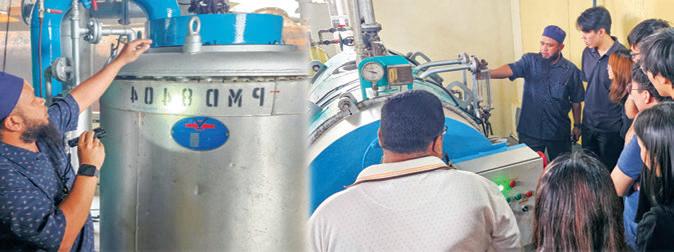
During the tour, Mr. Hiswandy introduced the oncethrough steam boiler, commonly used in commercial and industrial applications. He explained how chemical treatment is applied to the water to remove impurities, thereby enhancing steam quality and overall efficiency. Participants had the opportunity to examine a 3-pass fire tube boiler, a design engineered to enhance heat transfer efficiency by directing hot combustion gases through the boiler tubes three times before being expelled through the chimney. This configuration maximises the interaction between the hot gases and the water, significantly improving thermal efficiency and overall system performance.
The visit concluded with a token of appreciation presented by Ir. Tajul and Ir. Gary Lim (Secretary) to Mr. Hazri and Mr. Hiswandy in recognition of their valuable insights and hospitality. Overall, the visit provided engineers with an in-depth understanding of various boiler technologies, their operational

CIRCULAR – PROTECTION OF IEM CREST AND LOGO
Members are reminded that the IEM Crest and logo are duly registered under the Trade Marks Act 1976 and the Trade Marks Regulations 1997. The new Trademarks Act 2019 now governs the rights of the proprietors of such registered trademarks and imposes sanctions for infringement. In accordance with Section 54 of the Trademarks Act 2019, the following actions, inter alia, constitute an infringement of a registered trademark:
• use of a sign identical with or similar to a registered trademark
• use of the sign in relation to identical or similar to goods and/ or services for which the trademark is registered
• use of the sign in the course of trade.
• use of the sign without the consent of the registered proprietor
In view of the above, IEM would like to caution members that any unauthorised use of the IEM crest and logo in any manner, including on social media platforms such as Facebook, LinkedIn, Instagram, Telegram and others is strictly prohibited. Stern actions will be taken against members found infringing the IEM crest and logo which include expulsion (refer to Clause 3.15 of the IEM Constitution and Bylaws) and/or appropriate legal measures.
Thank you.
IEM Hon. Secretary
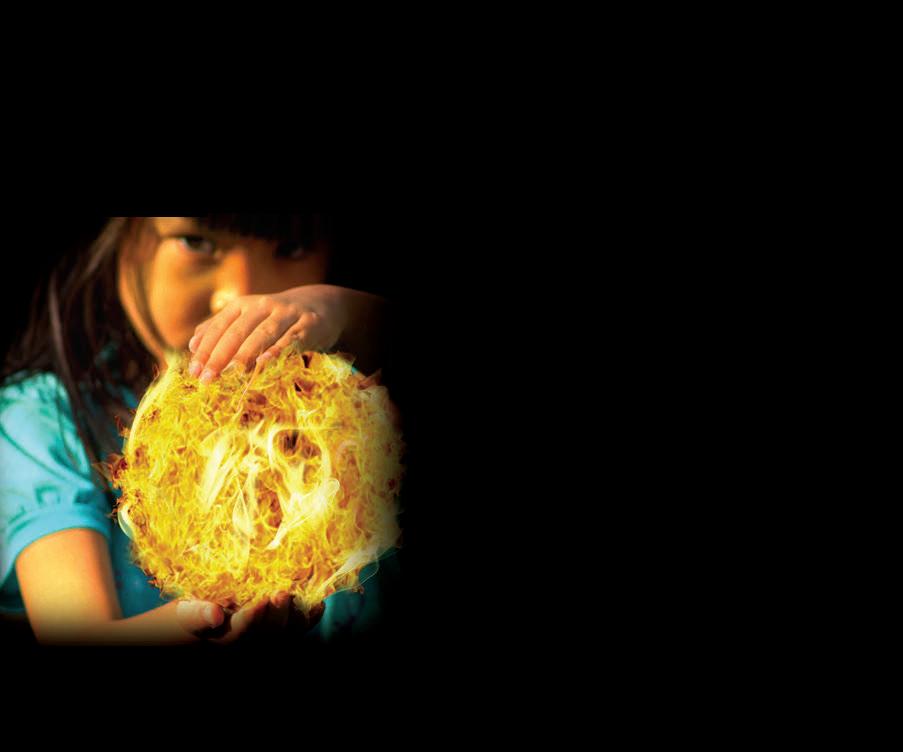



Annual Reports • Booklets • Brochures • Buntings • Business Cards
CD / DVD Replications • Calendars • Cards & Invitations • Certificates
Custom Printings • Envelopes • Folders • NCR Bill Books • Notepads Leaflets • Letterheads • Paper Bags • Posters • Stickers • Others



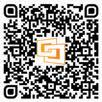

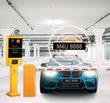
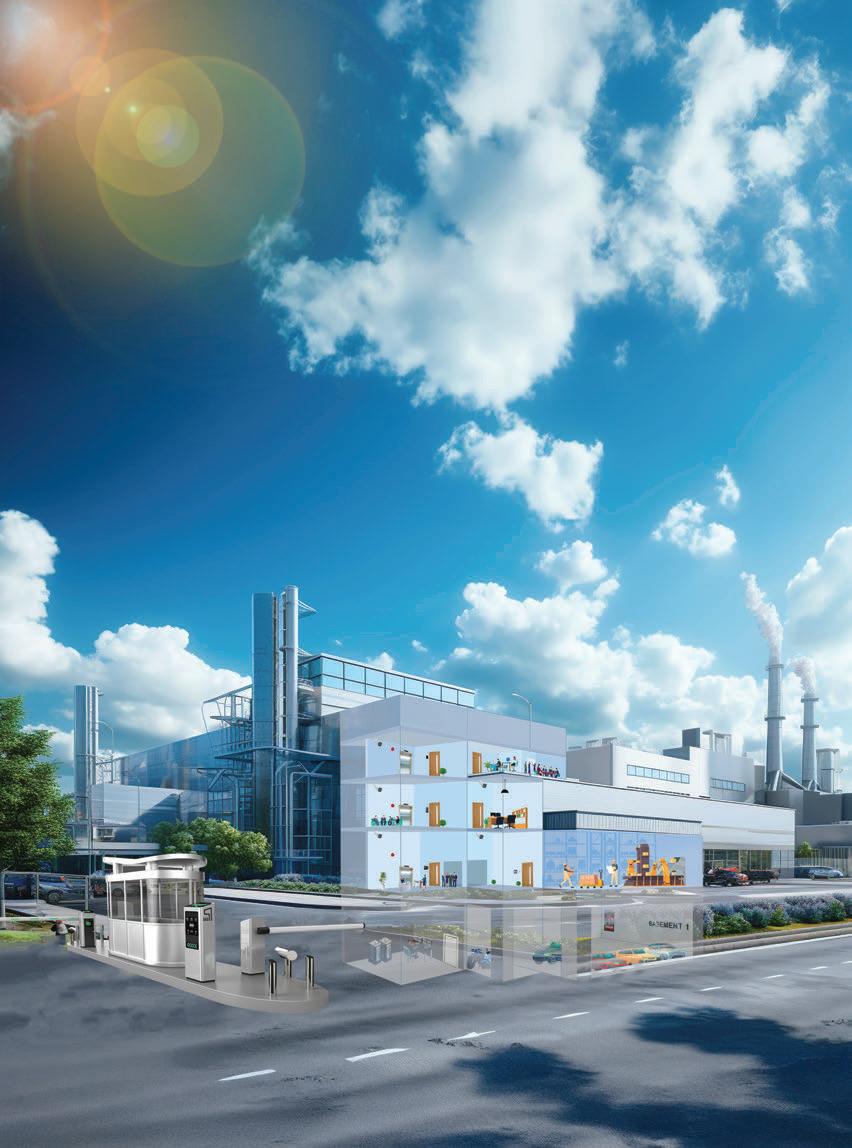
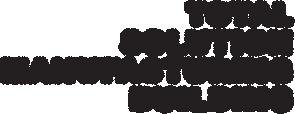
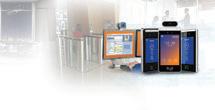





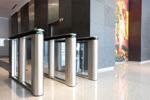


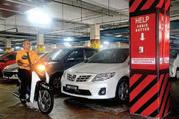
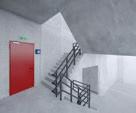

by:
On 14 December 2024, the Oil, Gas & Mining Technical Division (OGMTD) held its 34th Annual General Meeting (AGM) with 151 participants joining virtually. OGMTD has played a significant role within The Institution of Engineers, Malaysia (IEM) by promoting and advancing the science and profession of petroleum, oil & gas, and mining engineering. Petroleum, oil & gas, and mining engineering has a broad range of engineering and science-related key activities within the Oil & Gas and Mining Industry. OGMTD’s goal is to


inspire interest, foster advancement, and gain recognition of engineering and scientific contributions and development in these industries.
During the AGM, the chairmanship transitioned from Ir. Lee Chang Quan to Ir. Muhamad Her, who will continue to drive OGMTD’s aspirations and goals for Session 2024/2025. Looking ahead, OGMTD is planning to celebrate its Jade Jubilee this year and committee members are committed to tackle both industries challenges and offer exciting activities for IEM members and the next generation of petroleum,
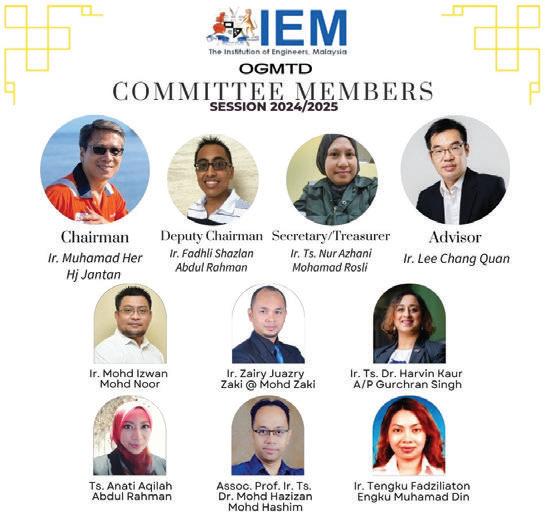
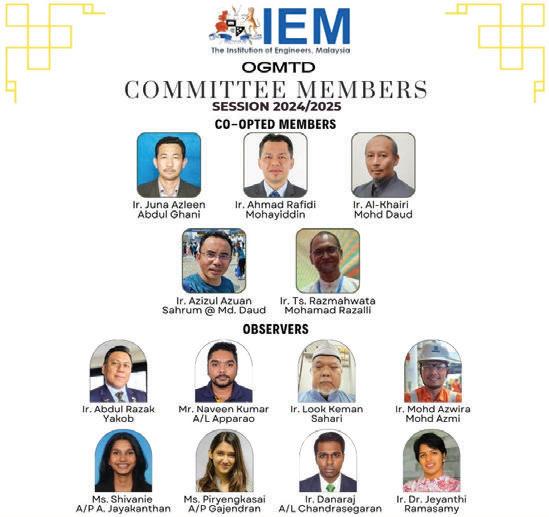
oil & gas, and mining engineers toward sustainable energy and energy transition. As major contributors to greenhouse gas emissions, these industries will face significant challenges in achieving Malaysia’s 2050 Net Zero carbon emission target with the National Energy Transition Roadmap (NETR) outlined, which will affect the competitiveness of the industry.
To remain competitive, investing in the development of the industry workforce is essential for adaptability and growth to achieve the NETR targets. Leveraging and capitalising on green energy initiatives will create new opportunities for Malaysia in technology development rather than just as a technology user. Support and active participation from industry stakeholders and players can drive and spark creativity and innovation toward energy transition demand.
The technical division has plans for various activities and initiatives to create development and opportunities for both future generations and experienced engineers such as the upcoming Oil & Gas Platform Design Competition, open to engineering undergraduates from Malaysian universities. The aim is to spark creativity and innovation
in the next generation, focusing on sustainable energy and energy transition. It will be sponsored by Hibiscus Petroleum Bhd, Malaysia’s first listed independent oil & gas exploration and production company. This effort requires industry collaboration, sponsorship, and mutual understanding to develop a competitive and knowledgeable engineering society capable of championing best practices both nationally and internationally.
OGMTD was the runner-up for the highest number of paid participants for 2023 and the technical division plans to maintain its performance while fostering the enhancement of knowledge in petroleum, oil & gas, and mining engineering for IEM members. The continued support of IEM members will ensure the technical division remains relevant in the movement toward Tenaga Lestari and Tenaga Hijau.
OGMTD would like to offer a big thank you to the committee members of Session 2023/2024 for their efforts and contributions in coordinating activities for the continuous learning and development of IEM members. We look forward to meeting you again in future activities or events.
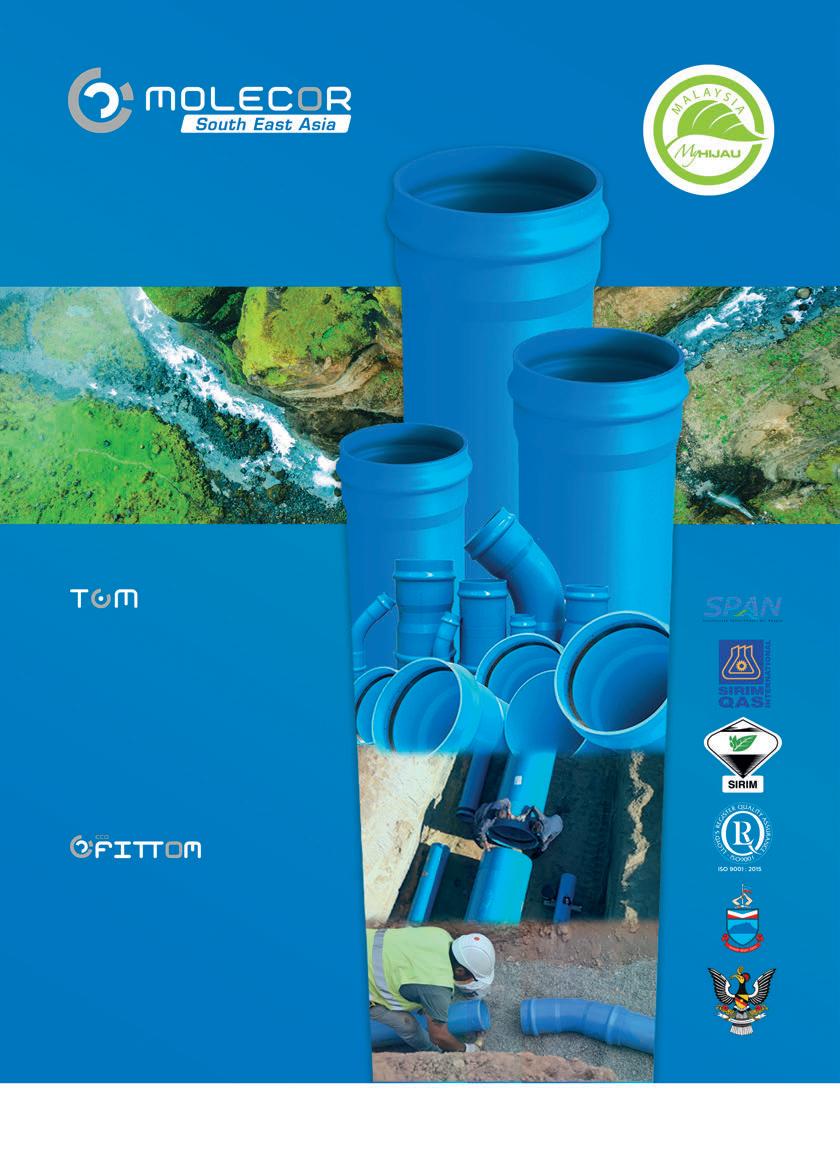


The Women Engineers Summit at the 42nd Conference of the ASEAN Federation of Engineering Organisations (CAFEO 42) was held on October 23, 2024, at the Sabah International Convention Centre in Kota Kinabalu. It served as a significant platform to celebrate, support, and advance the role of women in engineering in the ASEAN region.
The summit reflected the CAFEO 42 theme, Charting ASEAN Growth with Digital Transformation, Smart Engineering & Green Solutions, emphasising the importance of integrating technology and sustainability into engineering, to drive regional growth. Organised under the Women Engineers ASEAN Federation of Engineering Organisations (WEAFEO) initiative, the event aimed to empower women engineers by addressing career advancement, leadership, and work-life balance. It provided a collaborative space for women to share insights, to build connections, and to explore future opportunities within the engineering sector in ASEAN.
The distinguished keynote speaker, paper presenters, and forum panellists, including seasoned engineers and leaders from across ASEAN, discussed
by:

Dr. Habibah @ Norehan Haron
topics centred on the theme of the summit, and strategies for enhancing inclusivity and support for women engineers. The theme, Women’s Leadership: Engineering ASEAN’s Digital, Smart & Sustainable Tomorrow, was underscored by the opening remarks from the WEAFEO Chair, Ir. Ts. Dr. Syuhaida Ismail, and a keynote address by Ir. Ts. Mohd Yaakob Hj. Jaafar, Chairman of the Institution of Engineers Malaysia (IEM) Sabah Branch and CEO of Sabah Electricity (SESB). Ir. Ts. Mohd Yaakob highlighted SESB’s role in ensuring energy security and sustainability, emphasising the need to balance affordability with environmental responsibility in Sabah to secure Sabah’s energy future.
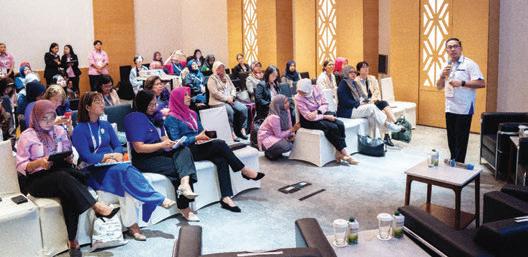

The summit was divided into two sessions. In the first session, engineers and leaders presented research projects and shared innovative strategies from across ASEAN countries.
• Myanmar: Engr. Yin Yin Mya discussed strategies for empowering women in engineering for a sustainable future.
• Singapore: Er. Victor Tan presented on Women’s Leadership: Engineering ASEAN’s Digital, Smart & Sustainable Tomorrow, emphasizing women’s strengths in attention to detail and empathy, while encouraging women to build confidence and speak up more.
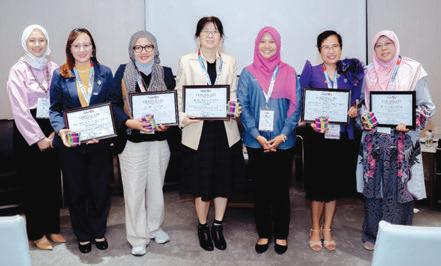
• Malaysia: Ts. B. Norerama D. Pagukuman shared her research on improving the efficiency of seafood drying processes using solar dryers. This innovative project, designed to empower women in the dried seafood industry, reflects how engineering can drive sustainable solutions that uplift communities.
• Vietnam: Ms. Nguyen Ngoc Le Quyen highlighted the significance of digital transformation in Vietnam’s engineering sector, noting the low participation rate of women engineers in her company digital section.
The second session took the form of a forum discussion, offering perspectives from experienced engineers and leaders on the evolving roles of women in engineering across ASEAN.
• Ir. Sri Hidayati from PII Indonesia emphasised the need for programmes to empower women in engineering, particularly focusing on supporting women in small and medium enterprises (SMEs) to succeed in the digital economy.
• Ir. Mah Siew Kien from IEM brought attention to the digital challenges women face in an increasingly automated world. She said that while AI serves as a powerful decision-making tool, it is vital to bridge the gender gap in digital skills to ensure equity, particularly in areas where salary disparities persist.
• Emiliana C. Patal-Dela Cruz from PTC, The Philippines shared insights on women’s leadership and the need for continuous upskilling to avoid being left behind. Her perspective reinforced the importance of lifelong learning in a field as rapidly evolving as engineering.
• Ir. Raftah Mahfar, also from IEM, spoke on the need for women role models for young engineers and shared her journey from starting as a young engineer to becoming a partner in her company. She underscored the value of women role models in engineering, as well as the importance of resilience, citing her experiences navigating challenges such as recession and retrenchment.
The discussions reflect a regional consensus on the importance of:
• Digital skill development for women to remain competitive in future industries.
• Lifelong learning as a mechanism to adapt to technological change.
• Building networks of mentorship and role models to inspire and guide younger generations.
• Promoting equity and inclusion to address persistent gender disparities in engineering and technology fields.
These conclusions emphasise the transformative potential of engineering when combined with deliberate efforts to empower women. The Women Engineers Summit 2024 showcased ASEAN’s dedication to advancing women’s roles in digital and sustainable engineering, promoting a more inclusive future for women engineers across the region.
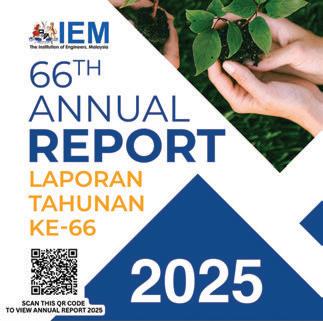
by:

Ir. Ts. Shum Keng Yan
Hmm… another Lost Time Incident (LTI). What have we really learnt? In reality, LTI is probably the least suitable measure for safety. LTI has been debated and analysed for years but it seems to have multiple lives to come back.
I will admit that the LTI Rate and Total Recordable Incident (TRI) Rate make better comparative studies between similar industries as the parameters are pretty well defined but to set it as a Key Performance Indicator is another matter. Let’s face it, it really does not work!
So where do we go from here and how can we energise the organisation so that… “hmm another accident… There goes my Key Performance Indicator (KPI)” is not a conversation to be had?
safety, a proactive hazard identification and all that sums up to being able to capture the hazard before it gets out of hand. Only then can we talk about holes and cheese and layers and control measure. If we do not even “see” the hazard, we will not be able to do Hazard Identification, Risk Assessment, and Risk Control (HIRARC). Guess what? Even in HIRARC, Hazard Identification comes first!
We can then see how all the results of safety programmes translate into the number of hazards we still pick up on the shop floor. We now have a really good way to engage the organisation on how they can contribute in a meaningful way. This is more actionable.
Perhaps it is time to get down to something that is much more useful inside the organisation. Somehow we are too preoccupied to always look at Lagging Indicator because we believe it can be a useful benchmark.
Perhaps it is time to drop Lagging Indicator, at least internally, so that we can really focus on something that has yet to happen but may potentially cause a Significant Incident (more on Significant Incident another time). The external comparative studies (such benchmarking and reporting) can be done later; it is not really a priority to know if we are at the top of the industry while we still have injuries.
The thought process then re-frames itself as:

Rather than figuring out what happened and all the incident investigations that go into getting the basic contributory factors, we may as well expend the energy to get something more positive.
Let us revisit how traditional KPIs are stacked up:
Once we move down the stack below Near Miss (yes, this is possible), we can then focus our energy on situations, things, equipment, conditions, acts, processes, and the like which may cause significant harm!
First, you need to get your organisation to define Significant Injury (at least that which is meaningful to your organisation). Once that is done, the next step is to create an understanding of what is Potential Significant Incident (PSI) and how to get the reports in an integrated manner and to fix it.

*I do not like the F word, so I am keeping to LTI max. Many get worked up over LTI and then say, let’s do TRI. Yes, getting further down the stack, it will become more leading. It is still not leading enough. Then let’s do Near Miss, except that in Near Miss, something did happen though the outcome was not significant. It all boils down to luck. Yes, Near Miss is a technical word for luck! More on this next time.
Deep down, we all know that the Safety Programmes that we run – Gembas, Coaching and a host of activities – are really the drivers for delivering the Zero Harm vision. These are what really matter. In reality, what we are trying to do is to create a safety mindset, eye for
Employees will be happier to participate as they can then understand how they can play a role in achieving Zero LTI. Neither Zero LTI nor Zero TRI are really executable and understandable KPIs at operator level.
I guess everyone will be happy to get more Opportunity For Improvements – except the Financial Controller (more spending) and maybe Facilities (more work) – but that is what will really bring us to Zero Harm and remove the month end LTI.
It is time to be a learning organisation and having more PSI would be really, really good! No one will be upset as the higher the Potential Significant Incidents that we fix, the better we will be. That is the incentive for us to use PSI.
Externally, we can still compare the LTIs over tea… maybe safe tea.
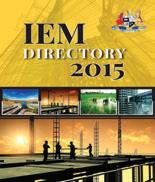
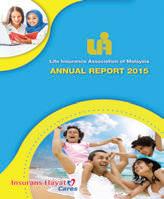


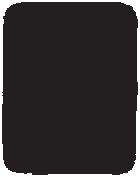
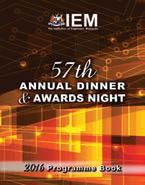



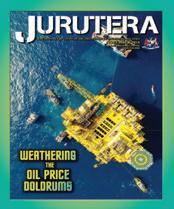
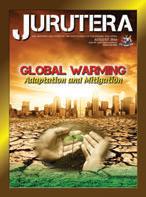

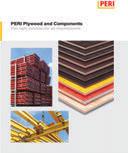






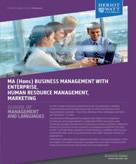
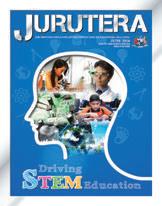




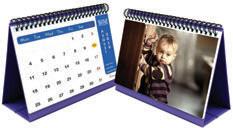

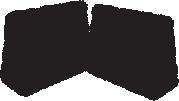










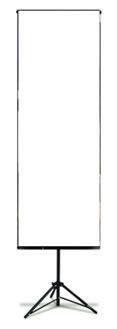
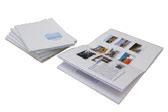

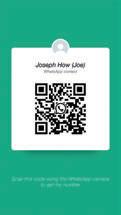

by:

Mr. Lim Yiren

https://bit.ly/43M8XVg
To celebrate World Engineering Day 2025, the Institution of Engineers, Malaysia (IEM) organised a series of activities including the highlight event, IEM Corporate Social Responsibility (CSR) Day 2025.
It took place on 1 March 2025 at Pusat Penjagaan Kanak-Kanak Cacat Taman Megah (PPKKCTM) in Taman SEA, Petaling Jaya. Supported by the Federation of Engineering Institutions of Asia and the Pacific (FEIAP) and the World Federation of Engineering Organisations (WFEO), this initiative underscores our dedication to extend our impact beyond engineering by uplifting communities and inspiring positive change. A total of 17 volunteers participated.
The event was a collaborative effort between the IEM Welfare Standing Committee and the IEM Young Engineers Section (YES). The Standing Committee on Welfare and Member Services, IEM spearheaded a donation drive to support the initiative which emphasised that engineers could contribute to society beyond their professional duties.
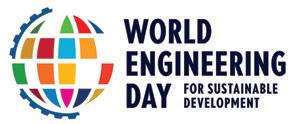
The visit served as a poignant reminder to appreciate our own circumstances and to extend support to those in need. IEM offers its heartfelt gratitude to all contributors, especially IEM members, Council Members, Secretariat staff, and volunteers who played a role in making the event a success.
The funds collected were used to purchase essential daily items, including rice, cooking oil, diapers, floor cleaner, dishwashing liquid, Milo, biscuits, 100 Plus, and other necessities as requested by the shelter. Additionally, IEM members also donated various food items and supplies. A total of 120 packs of fried macaroni were provided for the inmates’ lunch. All collected items were handed over to the shelter caretaker.
This act of kindness exemplified the value of assisting those in need, within our capacity. While the initiative may not be very grand in scale, it helped raise awareness about the importance of CSR, giving back to society, and fostering compassion.
It is crucial to cultivate kindness and empathy, to recognise the advantages we possess and the importance of caring and spending time with individuals with disabilities.
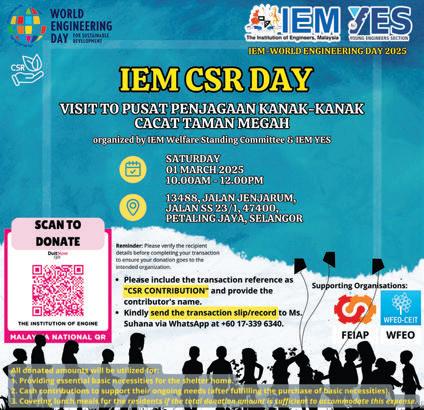
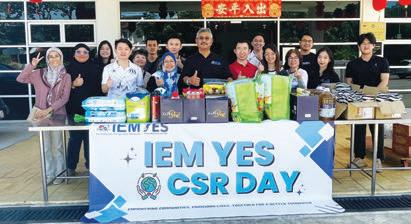
The visit started with a meet-and-greet session, during which the Welfare Standing Committee Chairman, Dato’ Ir. Wan Nazari Yusof, delivered his opening speech. Volunteers then sang Warisan, a song by the late Sudirman Arshad.
Following this were some interactive activities, including balloon games coordinated by the young engineers. The inmates participated with great enthusiasm; they particularly enjoyed the second game, which involved pairs of participants holding a balloon back-to-back and racing to a designated point. The third game also sparked excitement, where the participants inflated balloons to knock over cups.
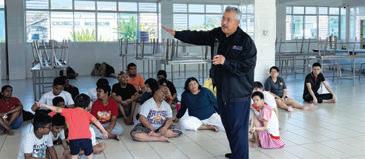
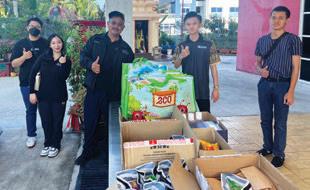
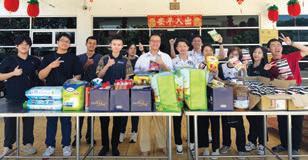
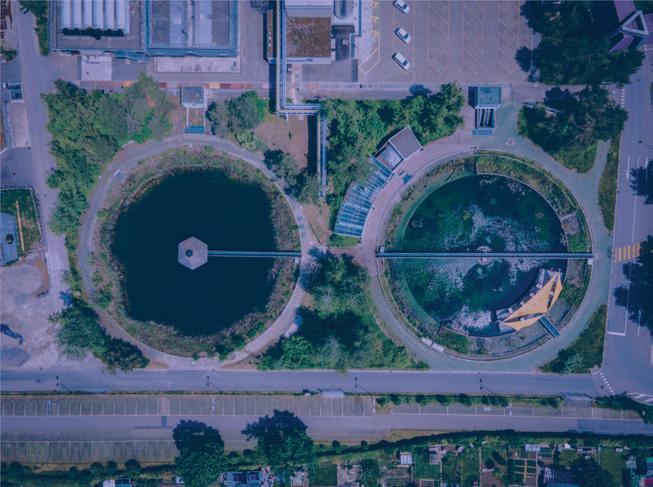
Following the activities, the caretaker took the volunteers on a tour of the facility, including the female dormitories on Level 2 and the multipurpose hall on Level 4 which is used for sports sessions and other functions. He enlightened us on the types of arrangements offered and said the shelter had recently relocated to this spacious building to better accommodate the inmates.
The event was held from 10.00 a.m. to noon and proved to be a rewarding experience for the volunteer team which handed out the donations of materials and supplies; it showed the excellent teamwork among IEM office bearers, Secretariat staff, and young engineers. The IEM CSR Day concluded with a group photo session.
The success of the IEM CSR Day aligns with the United Nations Sustainable Development Goals 1 (No Poverty), 3 (Good Health & Well-Being), and 10 (Reduced Inequalities). We encourage the organising of more such CSR sessions to raise awareness within the engineering community and provide opportunities for engineers to contribute to society.
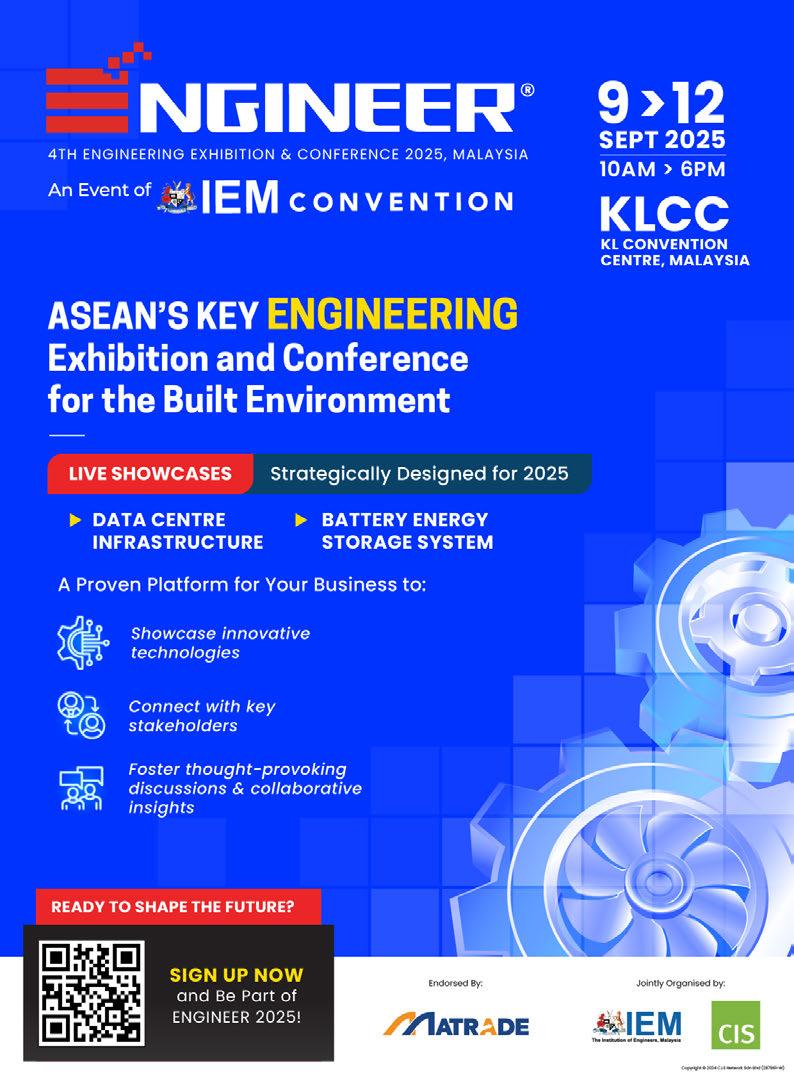

The Institution of Engineers, Malaysia

Jointly Organised between Geotechnical Engineering Technical Division (GETD) & Malaysian Geotechnical Society (MGS)
DATE : 3-4 DECEMBER 2025
TIME : 9.00 A.M. - 6.00 P.M.
VENUE : GRAND WYNDHAM, BANGSAR
Conference Themes
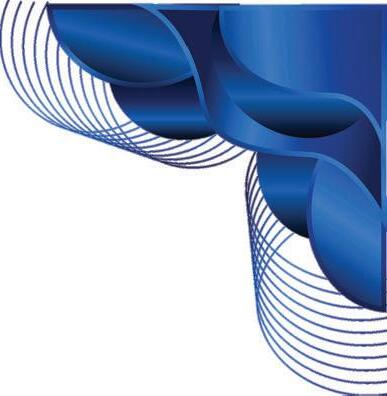
We invite submissions on a wide range of topics, including but not limited to:
• Soil Mechanics and Foundation Engineering
• Slope Stability and Landslides
• Ground Improvement Techniques
• Geosynthetics applications in Geotechnical Engineering
• Deep Excavations
• Soil Investigation and Testing
• Environmental Geotechnics
• Pavement Foundation
• Geotechnical Aspects of Sustainable Development
• Case Histories and Practical Applications on Megaprojects
• Abstracts should be no more than 300 words and not exceeding two (2) pages.
• Full papers must be written in English and submitted in Microsoft Word and PDF file format.
• All submissions must be original and not previously published or under consideration for publication elsewhere.
• Papers will be peer-reviewed and accepted papers will be published in the conference proceedings. Submission Guidelines
An Outstanding Paper Award will be presented to the best paper submitted to the conference. The award will recognize exceptional research, innovation, and contribution to the field of geotechnical engineering. The winning paper will be selected by a panel of experts and announced during the conference. The selected paper will also be considered to be published under an International indexed publications, subject to approval by the panel of experts.
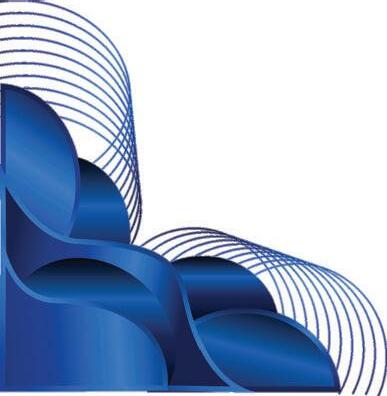
Important Dates
Abstract submission deadline
Notification of abstract acceptance
Full paper submission deadline
Notification of paper acceptance
Submission of the presentation slide
Conference day
: 28th February 2025
: 31st March 2025
: 1st July 2025
: 15th September 2025
: 15th October 2025
: 3rd & 4th December 2025
Submission of abstracts/full papers and enquiries:
All abstracts and full papers shall be submitted to the Organising Committee via email to, Ms Aisyah at: mgc2025@gmail.com or Tel: 03-7890 0132
We look forward to your contributions and to welcoming you to the Malaysia Geotechnical Conference 2025!
To all Members,
Date: 22 March 2025
LIST OF CANDIDATES ELIGIBLE TO SIT FOR THE PROFESSIONAL INTERVIEW FOR THE YEAR 2025
The following is a list of candidates who are eligible to sit for the Professional Interview for the year 2025.
According to the IEM Bylaws, Section 3.8, the names listed below are published as eligible candidates to become Insitution Members, provided that they pass the Professional Interview in 2025.
If there are any Corporate Members who have objections against any candidate deemed unsuitable to sit for the Professional Interview, a letter of objection can be submitted to the Honorary Secretary, IEM. A letter of objection must be submitted within one month from the date of publication.
Ir. Prof. Dr. Tan Chee Fai IEM Honorary Secretary
NEW APPLICATION
NAME QUALIFICATION
ELECTRICAL ENGINEERING
ABD MAJID BIN DARSONO BE (UKM) (COMMUNICATION & COMPUTER, 2002)
MSc HONS (NOTTINGHAM) (ELECTRONIC, 2005) PhD (NEWCASTLE) (2023)
APPLICATION FOR CORPORATE MEMBER
NAME QUALIFICATION
CIVIL ENGINEERING
MUHAMAD NABIL BIN MOHD NORDIN BE (UTP) (CIVIL, 2016)
LAW SEE MEE BE (TASMANIA) (CIVIL, 2006)
MECHANICAL ENGINEERING
LEONG KIN KHUIN BE (NEW SOUTH WALES) (MECHANICAL, 2000)
MECHATRONICS ENGINEERING
CHIONG MENG CHOUNG BE (SWINBURNE) (ROBOTICS & MECHATRONICS, 2008) MPhil (UTM) (2014) PhD (MONASH) (2016)
MEMBER TRANSFER
MEMBERS NO. NAME QUALIFICATION
CIVIL ENGINEERING
75252 LIM FON LIP, JUNE BE HONS (SWINBURNE) (CIVIL, 2011) ME HONS (SWINBURNE) (CIVIL, 2013)
129442 MUHD SYAKIR BIN ZAINOL BE (UITM) (CIVIL, 2017)
72732 MAY JAY JONG BE HONS (KLIUC) (CIVIL, 2008)
84774 THOMAS HOI THENG WAI BE (UM) (CIVIL, 2018)
ELECTRICAL ENGINEERING
104710 JONG LUNG SIN BE (UTS) (CIVIL, 2020)
126008 MUHAMMAD IRFAN DANIAL BIN MOHD. NORHAN BE (UITM) (ELECTRICAL, 2021)
121882 SYAFIK AMIR HAFIZI BIN MOHAMAD BE (UPNM) (ELECTRICAL & ELECTRONIC, 2013) ME HONS (UITM) (ENGINEERING MANAGEMENT, 2021)
118169 TENGKU AHMAD FIKRI BIN TENGKU ABDUL AZIZ BE (NOTTINGHAM) (ELECTRICAL & ELECTRONICS, 2010) ME HONS (UNIMAP) (ELECTRICAL POWER, 2021)
64727 VINESH A/L PERALAN BE HONS (UNITEN) (POWER ENGINEERING, 2015)
CHEMICAL ENGINEERING
78543 MUHD SAIFUL NAIM BIN ABDUL HAMID BE (UMP) (CHEMICAL, 2015) MSc HONS (UTM) (MECHANICAL, 2012)
108429 TAN JU KHENG BE (MONASH) (CHEMICAL, 2018)
MECHANICAL ENGINEERING
25144 SYARMIZAR BIN MOHD SAFKI BE (UITM) (MECHANICAL, 2006)
128375 MOHAMMAD SHATTIRQ BIN MAZELAN BE (ROSENHEIM) (PRODUCTION TECHNOLOGY, 2009)
50294 MOHAMED KHAFIZ BIN MOHAMED RAZIF BE (UITM) (MECHANICAL, 2014)
113145 NOOR MUHAMMAD JAMALLUDDIN BIN JUSOH BE (UTEM) (MECHANICAL, 2012)
TRANSFER TO CORPORATE MEMBER
MEMBERS NO. NAME QUALIFICATION
CIVIL ENGINEERING
118457 THONG WEI YUNG BE (USM) (CIVIL, 2005)
58018 TONY LIM MENG TECK BE (UMS) (CIVIL, 2012)
90071 LOW CHUNG KITT BE (UNIMAPI) (CIVIL, 2014)
35704 LEE YEONG HUEI BE (UTM) (CIVIL, 2010) PhD (MONASH) (2016)
116729 CHU YONG SIM BE (UNITEN) (CIVIL, 2015)
MECHANICAL ENGINEERING 123635 NICHOLAS IAN RICHARDS BE (MONASH) (MECHANICAL, 2019) 111864 NG BOON LAY BE (UM) (MECHANICAL, 2018)
ELECTRICAL ENGINEERING 89012 ABDUL MUIZ BIN DOLLAH BE (UITM) (ELECTRONICS, 2013) 24181 POH LAI CHUNG BE (UTM) (ELECTRICAL, 2001) 15977 MAT KAMIL @ MAT KHAMIS BIN AWANG BE (MIAMI) (ELECTRICAL,1988) MSc HONS (MIAMI) (ELECTRICAL, 1990) 97432
HUZAIFI BIN MOBARAK BE (MMU) (ELECTRICAL, 2014) 105124
(UTAR) (ELECTRICAL & ELECTRONICS, 2020)
(TULSA) (ELECTRICAL,1999)
The institution expresses its gratitude to all who have contributed to the Wisma IEM Building Fund. IEM members and readers who wish to make a donation may do so by downloading the form from the IEM website at http://myiem.org.my or by contacting the secretariat at +603-7890 0130 / 136 for further information. The list of contributors for February 2025 is as shown in the table below:


The primary objec�ve of JURUTERA is to publish ar�cles of general interest to IEM members. JURUTERA provides reports and news on professional ac�vi�es, branch ac�vi�es, and current issues of interest. It also serves as one of the medium of communica�on between the Ins�tu�on and its members, providing no�ces and announcements of IEM.
Ar�cles submi�ed for publica�on in JURUTERA must be original, light reading material, unpublished elsewhere, and of interest to IEM members. Technical content should be presented in a readable and accessible style. JURUTERA is published Monthly, and can be viewed in the IEM website.
1. Since JURUTERA is not a peer-reviewed publica�on, research ar�cles can be forwarded to the Editor of IEM Journal. However, ar�cles based on research conducted are welcome.
2. A technical ar�cle are limited to 2,400 words. The word count must be reduced appropriately with each addi�onal figure or diagram or photo.
3. The author may be requested to modify the ar�cle or to clarify certain points in the ar�cle. The Editorial Board reserves the right to edit manuscripts for clarity, readability, length and content.
4. An ar�cle should communicate informa�on efficiently and effec�vely to readers. The prose should follow a coherent line of thought. Sidebars, tables and figures may be used where appropriate. All mathema�cal equa�ons must be properly checked by the authors themselves, using MS Excel formulae format. It is suggested that all ar�cles have a summary or conclusion. Technical or formal ar�cles may list the references cited using the IEE style.
5. The actual publica�on of an ar�cle is at the sole discre�on of the Editorial Board.
1. Each report shall be limited to 800 words: All reports should be concise and precise in view of the limited publica�on space. The word count must be reduced appropriately with each addi�onal figure or diagram or photo. As the sizes of such inser�ons affect their word-countequivalent, it will be le� to the judgement of the authors on the number of words to cut. The Bulle�n Editor retains the right to edit or further reduce the number of words.
2. All reports are subjected to selection for publication by the Editorial Board: To be�er determine themselves on the suitability of the reports, the Editorial Board is free to seek further advice from par�es deemed fit to do so, while avoiding conflict of interest such as asking the same Technical Division to vet their own reports.
3. Reports on activities should be value-adding to the readership: For example, reports on talks should be akin to an extended abstract from which readers could get the gist of the talk and the subsequent Q&A. Reports on visits, forums and others shall serve a similar purpose, e.g. highligh�ng cri�cal observa�ons, issues, resolu�ons that will be of interest to the readers. Other than the basic informa�on such as �tle, venue, name and affilia�on of the speaker, details which are of li�le interest to most readers (such as the �me of arrival at a des�na�on, presenta�on of a token of souvenir etc) should be excluded
4. A report should preferably be submitted within a month from the date of activity: Considering that some Technical Divisions have internal ve�ng process prior to submission, the Editorial Board will not be unreasonably strict with this requirement.
5. Although the Editorial Board will strive to publish the reports in a �mely manner, the Editorial Board reserves the right to Schedule to a later date, e.g. to provide room to clear the backlog, or to be�er fit the theme of the month. Un�l the backlog is cleared, each issue of JURUTERA will contain a mix of earlier submi�ed and rela�vely current reports.
6. It is also the discre�on of the Bulle�n Editor to decide on the reports to be uploaded in the IEM webportal “Jurutera Online”.
1. It is recommended that authors peruse published ar�cles in past issues of JURUTERA to get a feel for the style, format and nature of the ar�cles. A technical ar�cle may use a formal style, while an opinion piece may be wri�en in a very casual style. The Editorial Board prefers to refrain from imposing par�cular styles.
2. Ar�cles should be in U.K. English. Submi�ed material is expected to be of a high standard.
3. Since ar�cles submi�ed for JURUTERA are not peer-reviewed, the onus is on the author to ensure that the ar�cle is factually correct and the arguments are sound
4. An ar�cle should be wri�en in a clear and direct style. Paragraphs and sentences should be short and easily diges�ble. Long-winded and tedious technical wri�ng styles must be avoided. Wri�ng is a two-way street; remember that you are wri�ng for an audience that consists largely of both technicallyminded trained professionals and budding engineers. The reader should be moved along briskly; reading JURUTERA ought to be an enjoyable and sa�sfying ac�vity.
Authors are requested to submit a recent passport-sized photograph together with a brief profile of themselves. Authors are also encouraged to provide keywords for ar�cles submi�ed
Electronic copies of ar�cles may be sent as a�achments to the following e-mail address: pub@iem.org.my. Your documents should have meaningful and unambiguous names. Large documents may be sent compressed using the ZIP archive format and should be sent as separate a�achments.
All photographs should be of high quality, ready for typese�ng. Image files should be in JPG/JPEG format, and of a high resolu�on (at least 300 DPI.) Drawn illustra�ons must be of high quality, as they will be used “as is”. All figures, tables, graphs and photographs must be rightly cap�oned
It is necessary to adopt a conserva�ve policy on the fair use of copyrighted material. The Editorial Board reserves the right to reject ar�cles that exercises the doctrine of fair use in an excessive manner. It is up to the author to obtain permission, if necessary, for the use of copyrighted material.
An ar�cle must not overtly promote a proprietary or commercial product. Such ar�cles will be immediately rejected. Proprietary material such as trade names and proprietary terms should be avoided. Prose that seems advertorial in nature is unwelcome. An objec�ve and balanced technical discussion involving commercial products is acceptable



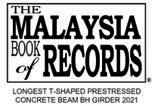
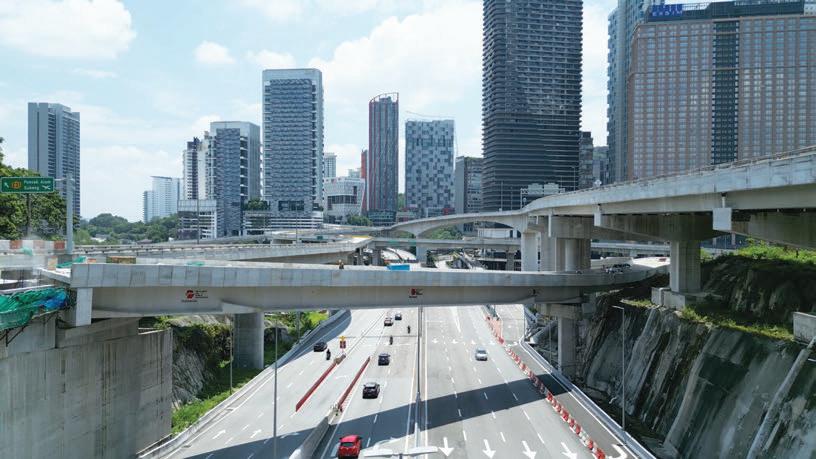

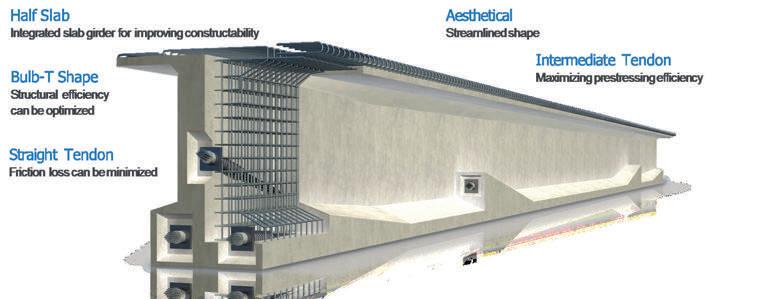
No. 45-3, Jalan PJU 5/20, The Strand, Kota Damansara, 47810 Petaling Jaya, Selangor Darul Ehsan. 603-61426638
jasonklc@nehemiah-grp.com / tancc@nehemiah-grp.com enquiry@nehemiah-grp.com 603-61426693


012-2880918 (Mr. Jason Khor) / 012-2186693 (Ir. Tan CC) www.nehemiah-grp.com/towoong